PLUS! RECIPES, BOOKS FOR KIDS, BEST BUYS & MUCH MUCH MORE!

HOW TO
choose the PERFECT BREAST PUMP
WHY
CAR SEATS are vital for TODDLERS
4 THINGS YOU NEED TO KNOW before having a C-SECTION
ISSUE 28
RSA R35.00 (VAT

CALM BODYcalm mind
in
+
travel
Mental well-being: dealing with parental burnout, postnatal depression
dads
a mini
break option
incl.)
And still have time for your family
Your business has something special to offer and our job is to give your customers a way to discover you and your brand online.


We help you develop your story and your voice and connect with the clients who want to do business with you. We like to talk about your business as much as you enjoy sharing it with others. That means we treat your business like it’s our own. We get down to the nitty gritty and find out as much as we can in an initial free consultation with you where you let us in on the journey you’ve taken up to this point and the goals you have, moving forward. We’ll be actively by your side all the way because your success is our success.
Let’s chat about your business!
Chat with us on WhatsApp Visit our website


CONTENTS
ISSUE 28
16
16 BANISH THE BOOZE

Planning for a baby? Why both men and women should consider quitting alcohol before and during pregnancy
22 ARE YOU CUT OUT FOR THIS?
Four things you need to know about having a Caesarean section
26 MILKING THE SITUATION
Why a breast pump is a must-have in your baby care collection
30 SOUND ADVICE
Hearing loss affects many aspects of a baby’s life—timeous intervention is important for overall childhood development
36 ALL STRAPPED IN
Accidents happen when least expected—ensure your little one is safely restrained in a properly installed child safety seat
40 BLOCKS OF BENEFITS
How to support childhood development through age-appropriate play
46 DAD MATTERS
Postnatal depression in men: what new fathers need to know—and how to ask for help
50 “I JUST CAN'T ANYMORE”
FEATURES 26
Exhausted, disconnected and fed up... What is ‘parental burnout’ and what can you do about it?
54 RANDS AND SENSE
How to teach your children age-appropriate money lessons—and how to make these count

58 THE BEST START IN LIFE
Today, parents are facing a range of challenges when it comes to feeding their kids well to support optimal physical and cognitive development. Here's how you can provide good nutrition to school-going kids
66 TRAVEL: A MINDFUL MINI BREAK


4 MOTHER & CHILD ISSUE 28
The Steenberg Hotel & Spa in the heart of the Cape Winelands is the perfect getaway for mums and dads to prioritise their mental health 40 58














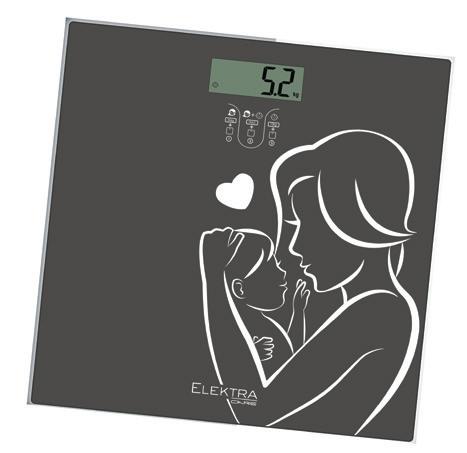
CONTENTS
ISSUE 28



REGULARS
12 FREEBIES!

Enter our competitions for some awesome giveaways
14 THE BUZZ
News, views and trends for pregnancy, birth and motherhood
62 WHAT’S FOR DINNER?
In her latest cookbook Good + Simple, Sarah Graham shares easy-to-make recipes covering meals for the whole family—and for any time of day


14

62
6 MOTHER & CHILD ISSUE 28
Homeschooling
star ts with impaq
No one knows your little one better than you do. So, who better than you to teach your child?

Homeschooling allows you to tailor your child’s learning to suit their individual needs and foster a love for learning in a safe, comfortable environment.
Impaq provides you with everything you need to make a success of your child’s learning journey. From the basics of reading and writing all the way through to helping them to prepare for the final Grade 12 examination, we make learning at home easy!
Lesson material (printed or e-books)
Our CAPS-aligned lesson material makes learning fun. The lesson material is developed by exper ts in their relevant fields and is based on the latest insights from the learning sciences.
Facilitator's guides (printed or e-books)
You will receive everything you need to suppor t your child, including a subject plan, suggested timetable, and lesson guidance.
Suppor t services
We will guide you and your child every step of the way with access to our dedicated education specialists.
Live ubject uidance essions
ubject uidance essions, presented by education specialists, to
Assessment elements and services
You will receive all the formal assessment components you need to evaluate your child and monitor their progress
Optimi Learning Portal
You will receive access to the Optimi Learning Portal , designed to support digital resources (including over 900 educational videos), personalised calendars, mark capturing, report generation, progress tracking, and more.

Impaq has been helping moms teach their children at home for over 20 years We are South Africa’s largest home education curriculum provider and have helped more than 30 000 learners study at home this year
from 1 September 2023.
Visit www.impaq.co.za for more information or email sales@impaq.co.za.
Get started with Impaq. Register online for 2024

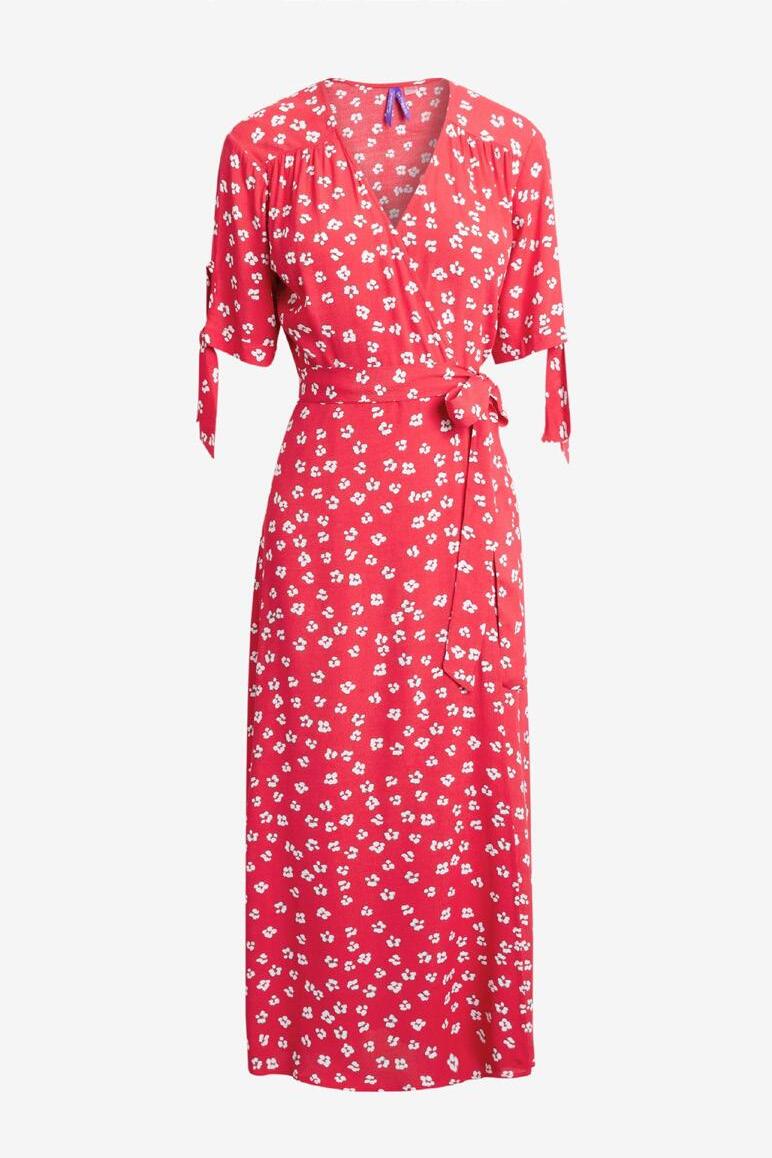
BEST BUYS

72
FASHION: BRING THE HEAT
Stylish spring/summer maternity clothing to keep you cool, calm and collected
76 PRETTY HEALTHY
New trending beautifying products that work like a charm
78 OUR FAVOURITE THINGS

76
A pick of the latest quality must-haves for your little one
79
GROWING UP FAST!
Here are a few nifty goodies for mommy’s big girl and big boy
80 EASY DOES IT
Novel products to give mothers a helping hand
82 WE LOVE BOOKS
A pop-up, a new Ten Minutes to Bed adventure, fun board books and funky recipe collections are all among this quarter’s favourite reads for youngsters
79


8 MOTHER & CHILD ISSUE 28
80
ISSUE 28
CONTENTS
72


pour fun into

Looking for a healthy alternative to sugary drinks?
Freshpak Junior Rooibos Tea is specially formulated for kids, naturally caffeine free and a source of polyphenols, a beneficial antioxidant.
Enjoy hot or as a refreshing iced tea. Perfect for kids at any time of the day.




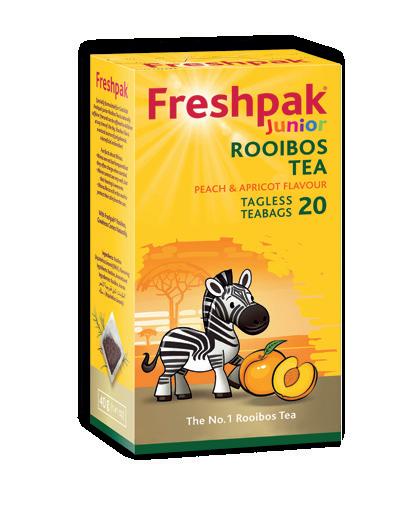
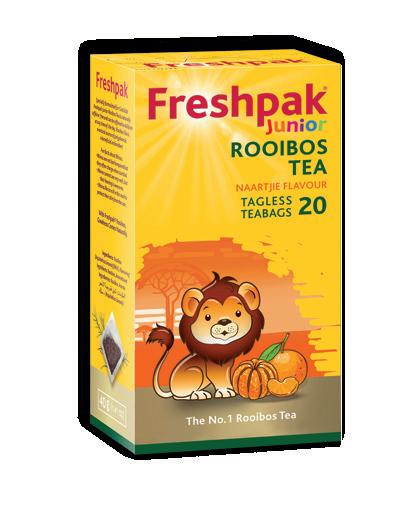

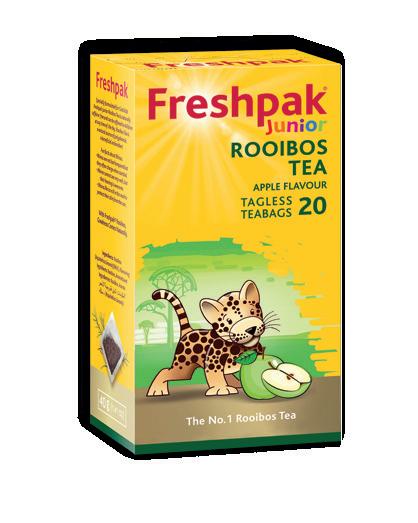


NO. ROOIBOS TEA
FRUITY FLAVOURS FUN FRUITY FLAVOURS
NO. ROOIBOS TEA LL
THE
FUN
THE
Scan for more refreshing recipes


the


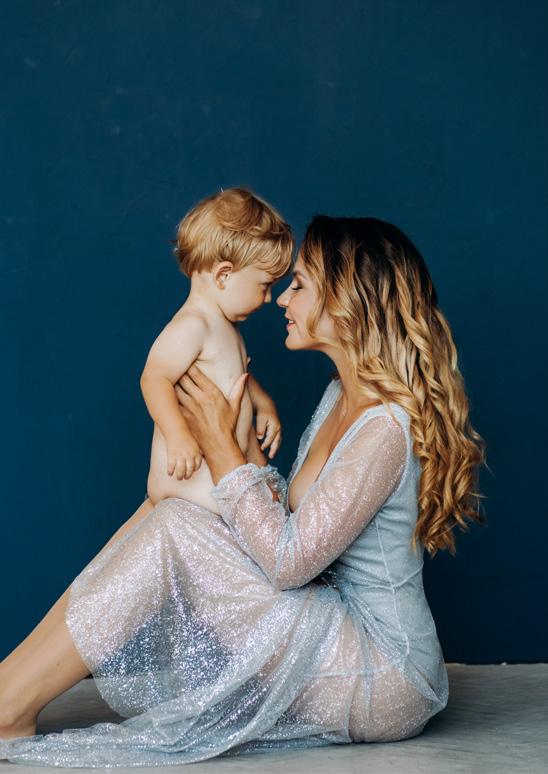



message from
team
There seems to be so much to learn about pregnancy and birth that you may feel overwhelmed by the deluge of information. However, the more you know what to expect, the calmer and happier you'll be during the process. We're here to help—in little increments, so that you don't feel inundated by all the do's and don'ts and other advice.
In this edition, you can learn more about the effects of alcohol on your unborn child. We also detail Caesarean sections and four things you should know about this surgical procedure.
For moms who have already welcomed their little ones into the world, we have helpful articles on breastfeeding pumps (why they are must-haves) and hearing loss in babies—why it's important to do a screening after birth.
And for those who know what it’s like to chase after a busy toddler, we have an essential read about car seats; they really are lifesavers.
Mental well-being is so important, particularly for parents. You can't take care of your child if you're not taking care of yourself. Check our articles on postnatal depression in men (yes, it happens) and parental burnout. And if you feel you need a break from the hustle and bustle, turn to our travel feature.
As in every edition, our Best Buys pages are brimming with trending goodies for mom, baby and tot as well as maternity fashion inspo; Sarah Graham dishes up some easy recipes for the whole family; and we give you the opportunity to win some great products for you and your child.
from all of us at Mother & Child
PUBLISHER
EDITOR
Donovan Abrahams
Ashley van Schalkwyk ashley@avengmedia.co.za
Tania Griffin
tania@avengmedia.co.za
Kauthar Renamé
Adobe Stock Unsplash Pexels Freepik
SALES DIRECTOR ADVERTISING SALES ACCOUNTS CLIENT LIAISON
Donovan Abrahams
Velecia Williams Samantha Cruywagen
Benita Abrahams Bianca Alfos
Majdah Rogers
Majdah Rogers
Ashley van Schalkwyk
IT & SOCIAL MEDIA HR MANAGER
Tharwuah Slemang
Colin Samuels
Novus Print
www.motherandchild.co.za www.issuu.com
Donovan Abrahams
Colin Samuels
Aveng Media (Pty) Ltd


DISCLAIMER: Mother & Child is published by Aveng Media (Pty) Ltd © 2023. The Publisher and Editors are not responsible for any unsolicited material. All information correct at time of publication. The information in this magazine is not medical advice and should not be treated as such. Neither is it intended or implied to be a substitute for professional medical advice, diagnosis or treatment. All content, including text, graphics, images and information contained in or available through the magazine and its website is for general information purposes only. You are encouraged to confirm with your doctor or other professional healthcare provider any information obtained from or through this magazine and to review all information regarding any medical condition or treatment. Never disregard professional medical advice or delay seeking medical treatment. Before making any changes to your person, or if any specific questions about any medical matter, consult your doctor or other professional healthcare provider.
10 MOTHER & CHILD ISSUE 28 INFANCY FAMILY PLANNING • PREGNANCY • BIRTH • INFANCY Mother & RSAR35.00(VATIncl.) Movement and play for What isinside? PLUS! RECIPES, BOOKS FOR KIDS, BEST BUYS & MUCH MUCH MORE!
MANAGING
COPY-EDITOR DESIGN PHOTOGRAPHIC SOURCES
ONLINE CO-ORDINATORS
PRINTER DISTRIBUTION DIRECTORS PUBLISHED BY ADDRESS Boland Bank Building, 5th Floor, 18 Lower Burg Street, Cape Town, 8000 | Tel: 021 418 3090 Fax: 021 418 3064 | Email: majdah@avengmedia.co.za Website: www.motherandchild.co.za
THE TEAM
Safe for pregnant & breast-feeding women
You should no longer have to give up certain products because you are pregnant.
There is no need to question our formulas, none of the products in the Novexpert skincare range contain any precautions or special warnings for pregnant or breast-feeding women.

100% naturAL origin & formulated by doctors
NO PRECAUTIONS
Scan to see the entire range.
FREEBIES
Enter our competitions to win some awesome products for you and your family

AROMATIC APOTHECARY HAMPER
To enter, email your name, address and contact details to ashley@ avengmedia.co.za, with the giveaway code TREEMC28 in the subject line.

TREE HUT FACE SCRUBS

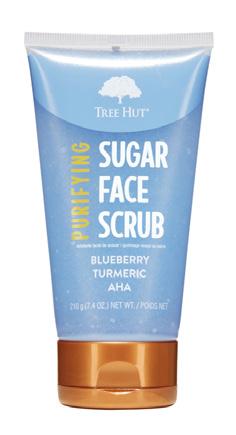
Buff and brighten to reveal your most glowing complexion with Tree Hut’s triple-action Face Scrubs: a rejuvenating recipe of shea, sugar and fruit enzymes keeps your skin feeling fresh and looking great. This facefriendly formula contains superfoods to nourish, hydrate, purify and brighten skin—and also deep cleans to remove dirt, oil and unwanted texture. Available in Brightening Pineapple & Papaya, Hydrating Watermelon & Cactus, and Purifying Blueberry & Turmeric.
We’re giving away three Tree Hut Face Scrubs, each worth R395!
Aromatic Apothecary was founded by qualified pharmacist and aromatherapist, Doryce Sher. The company believes in the power of plant ingredients and the safe use of aromatherapy oils to assist in achieving ultimate health and wellness for the whole family. The Aromatic Apothecary range comprises a wide selection of specially designed and formulated therapeutic aromatherapy products: ready-to-use combinations designed to care for the underlying cause of ailments such as stress, fatigue, muscle aches, sleep issues and sinus problems.
We're giving away a special Mom & Child Sleep hamper including a Scentstation, Silent Moments Burner Oil, Silent Moments Massage Oil, Silent Moments Mini Roll-on, Silent Moments Room Spray, and Kids Karma Massage Oil—all to the value of R1 250!


To enter, email your name, address and contact details to ashley@ avengmedia.co.za, with the giveaway code AROMC28 in the subject line.





The closing date for entries is 15 January 2024. One entry per person per giveaway. Winners will be contacted via email or telephone. The judges’ decision is final and no correspondence will be entered into.
12 MOTHER & CHILD ISSUE 28 GIVEAWAYS


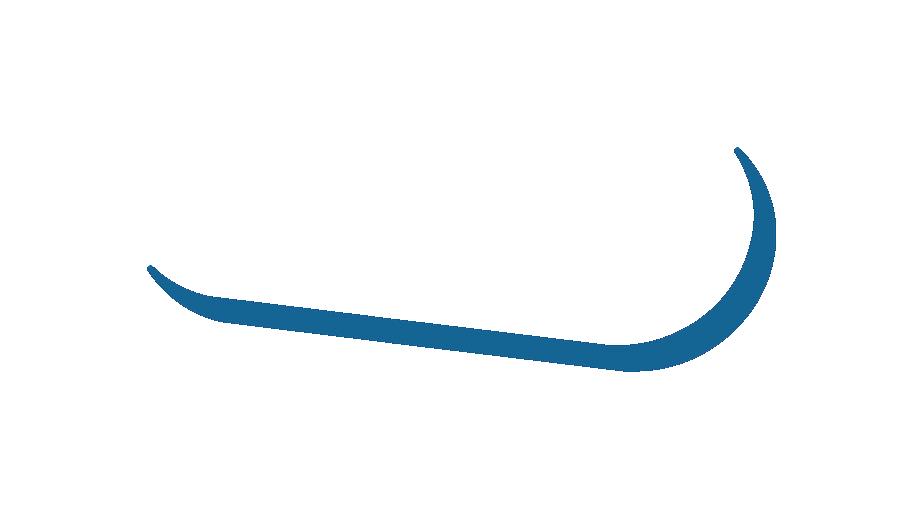





What’s the buzz
The latest news, views and trends for pregnancy, birth and motherhood

Tech billionaire Elon Musk and his on-andoff again girlfriend Grimes now have a third child together. The little boy is named Tau Techno Mechanicus. Which fits in well with his siblings’ names: X Æ A-Xii and Exa Dark Sideræl...

BABY BULLETIN
Which little celeb babies have arrived over the past quarter?
Former child actress Lindsay Lohan is all grown up and a first-time mom. She and husband Bader Shammas had a baby boy in July, naming him Luai—an Arabic name meaning ‘shield or protector’.





Tennis icon Serena Williams is a mom of two! She and husband Alexis Ohanian greeted their second baby girl in August. Her name is Adira River Ohanian.






Comedian and actor Jake Whitehall welcomed his first baby with girlfriend Roxy Horner in September.
“Utterly overwhelming and joyous in ways I couldn’t have even imagined,” he posted on Instagram.








Crazy Rich Asians actress Constance Wu and boyfriend Ryan Kattner welcomed their second baby together, a son, in July.
It was baby boy number two for music star Rihanna and rapper A$AP Rocky, born on 1 August. Riot Rose Mayers joins his year-old brother RZA Athelston.
14 MOTHER & CHILD ISSUE 28 NEWS

FEEL GREAT!

The latest health and wellness trends for moms
1. EDIBLE PRENATALS
Chewable, powdered and liquid options abound in an effort to banish pill fatigue. These are more nutrient-dense than most gummies, but are still easy to digest for morning sickness sufferers.
2. CLEANER, GREENER OVER-THE-COUNTER MEDS
Several brands are taking on the pharmacy aisle with an aim to bring better-for-you ingredients and less reliance on single-use plastic.
3. SMARTER FERTILITY PLANNING
Thanks to a spate of newcomers in the fertility world, taking a proactive approach to reproductive health and fertility challenges is easier than ever: from freezing your eggs, to getting a fertility coach, to joining virtual fertility communities.
4. A FRESH TAKE ON FIBRE
From balancing blood sugar to bulking up stools, lowering cholesterol, to providing fuel to your gut microbiome and fending off inflammation, fibre is an unsung hero. Myriad new food brands have popped up to give fibre the glow-up it deserves.
5. EARLY BEDTIME—FOR ADULTS
When you can, avoid falling prey to revenge bedtime in favour of hitting the hay soon after your kiddies conk out. Going to bed at 9 p.m. or 10 p.m. is a trade-off, but you’ll have a more balanced circadian rhythm, which contributes to less fatigue (more energy for those early mornings) and better hormone function.
Source: www.mother.ly

UP IN THE AIR
8 items to have on hand when flying with a toddler
1. Endless snack supply
The chewing movement may help their ears during takeoff and landing, but it also gives them something to do. Bring a variety that ranges from healthy, to sweet, to salty, to crunchy. (But remember that pouches and liquids will be thrown out if not under the regulated amount.)
2. New-to-them toys
There’s not much more a toddler likes than a new toy. Go to a lowcost store to stock up on a few toys your toddler doesn’t already have—you can even borrow some from a friend. Covering them in gift wrap provides a way for a tired, anxious or bored toddler to focus their attention on something non-destructive.
3. Battery-charging device
Keeping a battery-charging pack or power bank somewhere accessible may be the ticket to preventing an epic tantrum when the low battery signal comes on your device. Handy for plane delays, flight cancellations or other unexpected changes.
4. Antibacterial wipes
Having plenty of antibacterial wipes on hand can prevent your handsy toddler from unknowingly touching surfaces that are
contaminated. You can quickly wipe down bathrooms, armrests, airplane trays or any other surface your child may touch.
5. Headphones
Having games, favourite TV shows and movies downloaded to a device is a tried-and-true method for keeping toddlers entertained. The downside is that not everyone wants to hear Daniel the Tiger’s advice or the soundtrack to Frozen. Your toddler will feel grown-up wearing some headphones and they’ll likely block out any noise that would disrupt their concentration.
6. Comfort items
Ease the situation for your toddler by having the things that bring them comfort. Maybe it’s their favourite blanket they can’t sleep without, or a solid stash of their beloved pacifiers. If they need their teddy when they’re scared, make sure it’s in an easily accessible place.
7. Non-electronic distractions
It’s smart to have backup options for entertainment that don’t rely on technology, just in case. Having a few colouring books and board books in your bag is never a bad idea. Window clings are a fun way to decorate your window, or toys like pop-fidgets or Play-Doh can be a hit.
8. Medicine stash
On the off chance that your toddler will start showing symptoms of sickness while on the plane, you don’t want to be wishing you’d grabbed the Panado out of the medicine cabinet... Some children are especially bothered by takeoff and landing—the pressure in their ears can be painful—so having medicine on hand could help with that, too.
Source: www.babygaga.com
ISSUE 28 MOTHER & CHILD 15

BANISH THE BOOZE
Planning for a baby? Why both men and women should consider quitting alcohol before and during pregnancy
BY LOLITA ALFRED, JAYNE WALKER & LESLEY SMITH
16 MOTHER & CHILD ISSUE 28
Alcohol PREGNANCY

ISSUE 28 MOTHER & CHILD 17
When a couple is planning on having a baby, it’s often the woman who's seen as responsible for the health of the unborn child.
It's recommended that women should abstain from alcohol consumption during pregnancy. This is because it’s known to increase the risk of miscarriage and foetal alcohol spectrum disorders (FASD). FASD is an umbrella term used to describe a range of emotional, behavioural, developmental and learning challenges that are linked to a baby’s exposure to alcohol while in the womb.
It's also recommended that if you’re planning to become pregnant, the safest approach is not to drink at all to minimise the risks to your pregnancy.
But evidence from large surveys shows that not all women stop drinking before pregnancy—whether or not the pregnancy was intended. In a 2017 study of 5 036 women in the United States, the prevalence of alcohol consumption before pregnancy was similar between those with intended (55%) and unintended pregnancies (56%).
In a 2015 study of 3 390 Swedish women, weekly alcohol consumption was not significantly different between women with a “very planned pregnancy” (11%) compared with women with a “very unplanned pregnancy” (14%).
And a 2013 survey of 258 Danish women found that although 77% of their pregnancies were “very” or “fairly well planned”, one out of five reported binge drinking early in the pregnancy. Among women with unplanned pregnancies, this rose to one out of three.
But while the focus tends to be on a woman’s relationship with alcohol before and during pregnancy, an increasing amount of evidence indicates that men’s alcohol use also plays a role when it comes to the health of the baby.
Indeed, alcohol can affect sperm DNA—in some cases reducing fertility and the potential to conceive.

An increasing amount of evidence indicates that men’s alcohol use also plays a role when it comes to the health of the baby.
18 MOTHER & CHILD ISSUE 28
PREGNANCY Alcohol
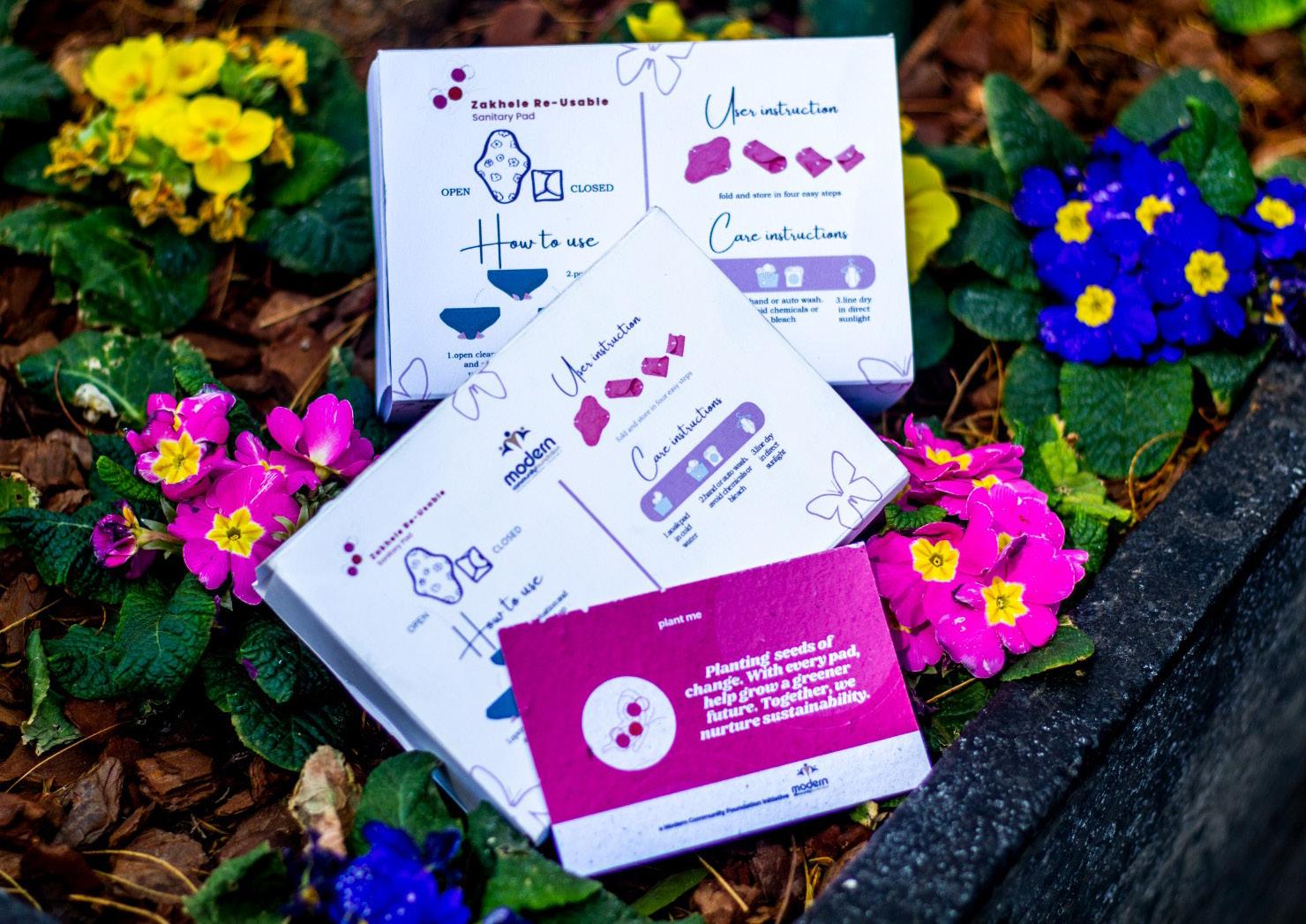
ABOUT US

Modern Community Foundation (MCF) is dedicated to promoting sustainable self-reliant initiatives among marginalized communities. We use the United Nations Sustainable Development Goals (SDG’s 2030) as a guide for measuring the impact of our programs. Our focus is on empowering young girls and vulnerable women while aligning our work with selected SDG’s.
www.zakhelere-usable.com mcfoundation.org.za


Approximately 7 million South African girls do not have access to, or cannot afford to buy, sanitary products, according to fomer , South Africa's Minister for Women.
We at Modern Community Foundation are on a mission to destigmatize menstruation. Stigmas contribute to the problem, as girls are taught to keep their cycles secret and face cultural beliefs that associate menstrual products with loss of virginity. Modern Community Foundation conducts reusable sanitary pads drives at different schools in rural areas. We use this opportunity to have discussions with the youth around feminine hygiene, sexual health, teenage pregnancy and further education and career pathing opportunities.
DID YOU KNOW YOUNG GIRLS miss 60 DAYS of school per annum due to PERIOD POVERTY
MISSION
· Giving Girls control over their cycles so they can continue their education
· Affordable menstrual hygiene and health
· Educate people on sexual and reproductive health
· Address the stigmas surrounding menstrual cycles
VISION
Empowering young women through sustainable health care solutions. Zakhele ReUsable Sanitary Towel is on a mission to touch and impact over 1 Million girls by 2030.
011_003_7864 zakhelereusablesanitarypad

WHY STOP DRINKING?
Better health outcomes for babies begin before conception, with clear links established between the health of men and women before pregnancy and the health of their offspring.
Research shows that if couples are trying to conceive, it makes sense for them both to quit the booze at least six months before pregnancy. This helps reduce the risk of potential negative outcomes for the baby, such as congenital heart disease.
It also has benefits for the expectant parents, such as better sleep quality, increased energy and enhanced concentration levels.
Research has also found that if a couple lives together and the male partner drinks, there's a higher chance that the woman will drink alcohol before and during the pregnancy. One of the reasons this may be the case is explored in another study where women said that drinking with a partner, whether before or during pregnancy, provided a sense of social connection.
The period before pregnancy, known as preconception, is a window of opportunity for would-be parents to improve their health and increase their
likelihood of conceiving. And alcohol consumption should be thought about as part of this.
As part of our recent research, we reviewed the literature exploring people’s and health professionals’ views about information and support for reducing drinking in the period before getting pregnant.
We found that women were aware that lifestyle factors such as smoking or drinking alcohol could affect their pregnancy and increase the risk of poor outcomes for the baby. But there was a notable lack of awareness of the importance of men reducing their alcohol consumption when planning for pregnancy, too.
Indeed, men don’t usually go to clinics to get information about preconception health, as this is usually left to the woman.
QUIT TOGETHER
While there's some indication that men, as well as women, are open to changing their drinking behaviour when planning for pregnancy, our literature review found that very few studies have explored men’s or partners’ views on preconception health.
While there are promising results from interventions and approaches aimed at enhancing preconception health in men and women—such as alcohol screening followed by counselling and health education on changing behaviour— there’s not enough emphasis placed on men’s health at the preconception stage. This needs to change because, as the research shows, a baby’s health is influenced by both mum and dad.
So, if you're considering trying for a baby, now could be the time for both partners to set new goals and cut down on drinking together. And if you’re concerned about the quantity you drink, or are dependent on alcohol, you should get professional advice and support on cutting down safely.
Lolita Alfred is a lecturer in Mental Health in the School of Health and Psychological Sciences (University of London).
Jayne Walker is a senior lecturer in the Faculty of Health Sciences at the University of Hull.
Lesley Smith is a professor of Women's Public Health at the Institute of Clinical and Applied Health Research (University of Hull).
20 MOTHER & CHILD ISSUE 28 PREGNANCY Alcohol


ARE YOU CUT OUT FOR THIS?
Four things you need to know about having a Caesarean section
BY CLAIRE PARKER-FARTHING
22 MOTHER & CHILD ISSUE 28
PREGNANCY C-sections

If you’re pregnant or planning to have a baby soon, you’ve probably been given lots of advice and information about what you may experience during and after the birth. But less information is often given about what to expect if you should need or choose to have a Caesarean section (C-section).
There are many reasons a C-section may be performed, though typically it happens for medical reasons (for example, if the baby’s or mother’s health is at risk during labour). But it’s also possible to opt to have a C-section without clinical need.
Someone may opt for a C-section for reasons including fear around labour and birth, previous traumatic birth experiences or to ensure their partner can be present (for example, if they work abroad or serve in the armed forces).
Regardless of where and how you decide to give birth, it’s important to make sure you’re also informed about what to expect when it comes to having a C-section.
Caesarean birth is a major surgery and, as such, is not risk-free. But while we can never eliminate the risks
There are many reasons a C-section may be performed, though typically it happens for medical reasons
ISSUE 28 MOTHER & CHILD 23
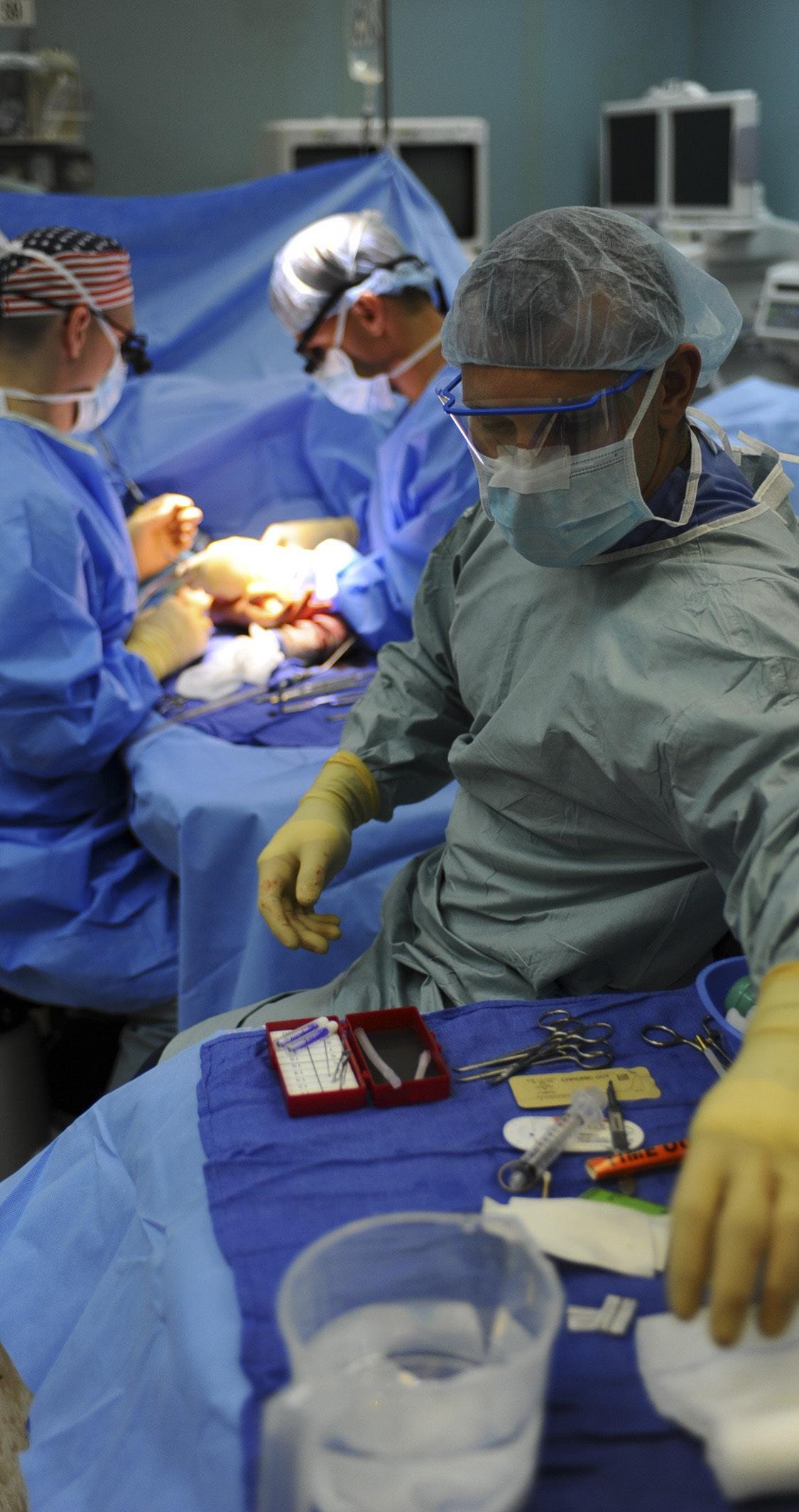
entirely, advances in surgery and healthcare also mean Caesarean births are safer now than they’ve ever been.
Here are four important things to know:
SURGICAL COMPLICATIONS ARE A RISK.
Up to 15% of women may experience post-surgery wound infections. And, although less common, damage to internal organs and blood clots can also happen (though only in about less than 1% of cases), alongside greater blood loss compared with a vaginal birth.
Any surgical complications that arise may mean you have to stay in hospital longer while undergoing treatment. While this may temporarily affect infant feeding and how you bond with your baby, it is unlikely to have any long-term consequences for your relationship.
2
IT CAN AFFECT FUTURE PREGNANCIES.
Having a Caesarean is also likely to mean a more complex subsequent pregnancy and birth, with research suggesting it increases chances of placental complications, greater blood loss and scar rupture, alongside scar tissue forming between your organs.
There's also a slightly increased chance of infertility and stillbirth after having a Caesarean birth—although the reasons for this remain unknown, and the numbers remain very small.
If you have a C-section the first time you give birth, it may also increase your chances of needing to have a Caesarean at your next birth. This is due to the more complex nature of having a scar on your uterus during pregnancy and birth, and the extra care needed making you more high-risk.
The second Caesarean surgery itself may also potentially take longer due to the scar tissue from the previous surgery—which may also increase the risk of greater blood loss and infection.
This may be worth considering if you’re planning to opt for a Caesarean birth, particularly if you'd like to have more than one baby, as it may affect your future pregnancies.
24 MOTHER & CHILD ISSUE 28
PREGNANCY C-sections
1
3 4
THERE ARE SOME POTENTIAL RISKS TO THE BABY.
Caesarean birth may carry certain risks to the baby versus a vaginal birth.
For example, around 2% of babies can suffer skin lacerations from the operation. They also may need special or intensive care, as they’re more likely to have breathing problems compared to babies born vaginally.
Some research suggests babies born via C-section may be more susceptible to developing asthma and diabetes. It’s still uncertain why, but may be due to the fact that babies aren’t exposed to certain bacteria that are important for developing their microbiome.
SCHEDULED BIRTH CAN BE A BENEFIT.
If you opt to have a Caesarean birth for whatever reason, there may be some benefits.
For example, a Caesarean birth is more predictable, which can be helpful for you if you want more control over your birth experience—especially if you're feeling anxious about giving birth.
Some studies also show a potential link between lower chances of developing urinary incontinence and prolapse with a Caesarean birth. But it’s important to weigh these potential benefits against the risks that come alongside Caesarean birth.
MAKING YOUR CHOICE
Consider asking your midwife or doctor what your full range of options are. They will also help you develop a specific personalised plan depending on your preferences and circumstances.
You may also want to ask your doctor or midwife about what can be done to minimise risks of complications to your or your baby if you need or choose to have a C-section.
If considering a Caesarean, it’s worth voicing your preferences at the earliest opportunity in your pregnancy to help your care providers offer you the best support, tailored to your needs.
Claire Parker-Farthing is a senior lecturer in Midwifery at Anglia Ruskin University.

ISSUE 28 MOTHER & CHILD 25

Milking the situation
a breast pump is a musthave in your baby care collection
26 MOTHER & CHILD ISSUE 28 BABY Breastfeeding
Why
New times call for new tools, and as a new mum you'll be discovering one of the most useful tools in your baby care collection that will support both your preparedness and peace of mind as well as your baby’s health and future development.
Before you get nervous about tackling something new, using a breast pump is easily accomplished—and once you get the hang of it, it will be like riding a bicycle hands-free.
Firstly, why is a breast pump so necessary?
• To keep your baby supplied with an adequate supply of mother’s milk for their recommended two-year breastfeeding journey.
• To express milk for when you're away from your baby (or if they are premature or ill).
• To allow your caregiver to feed your baby when you return to work after maternity leave.
• To feed an infant who's unable to nurse properly.
• To create an emergency supply.
• To release the pain from breast engorgement.
• To supplement your baby’s first solid foods at meal times.
• To allow other family members to step in and be involved in baby’s care.
• To support you when you're tired, by getting a period of rest and extended sleep time.
BEST FOR YOU
There are three types of breast pumps available to new mothers, and you'll need to decide which is best suited to you and your new mothering lifestyle.
If you're on an extended maternity leave and you plan to pump only once or twice a week, such as when you go out dining for a special occasion, then a manual breast pump should be adequate for your needs.
If you need to return to work after maternity leave, you may want to consider an electric pump to help save you time and convenience during your busy work week. With South Africa experiencing unprecedented bouts of loadshedding, you'll also need to consider the charging capabilities of an

electric breast pump and whether it's electric-only, battery-operated or comes with a USB charging option.
The third type is a hospital-grade breast pump that's necessary for babies who are required to stay in the hospital due to health issues or following birth complications, and requires you to pump up to eight or more times a day to supply milk for your newborn and establish your milk supply.
Some medical aids make breast pumps available through their maternity benefits up to a certain price limit, so check in with yours to explore your options and discover a breast pump best suited to your needs. Consider choosing a lightweight and low-sound breast pump so you can stay mobile and pump wherever and whenever you need to.
“I underestimated how important my breast pump would be with my first child,” says mum-of-three, Brooke West. “It was around holiday time, and I was celebrating with family over a threecourse meal which I enjoyed along with a sneaky glass of champagne so I could feel part of the fun. My poor son was so gassy, niggly and uncomfortable all of the next day, that I never made that mistake again. My breast pump became my best friend when planning to eat and drink foods without it harming or affecting my baby.”
While alcohol remains an absolute nono when breastfeeding babies, some foods can also cause upsets in your child’s digestive system and well-being, such as beans, broccoli, cauliflower and some dairy products. Common allergycausing foods include cow's milk, soy, wheat, corn, oats, eggs, nuts and peanuts, and fish or shellfish.
Some of the most frequently asked questions about breast pumps
HOW DOES IT WORK?
If you attended prenatal classes, you might already have been introduced to breast pumps. It helps to be able to hold and feel the fit of the breast pump when figuring out how to use it for the first time. The flange is the plastic cup piece that fits over your breast nipple and areola (the dark skin surrounding your nipple) to create a light seal against your skin. When pumping, your nipple should be able to move freely inside the tunnel of the cup without too much of the areola being drawn in. The flange should create a light suction pressure to express the milk from your breast to flow into the bottle.
TIP: Breast pumping should never feel sore or uncomfortable.
ISSUE 28 MOTHER & CHILD 27
WHEN CAN I START BREAST PUMPING?
New moms can start pumping at any time; however, when you first start pumping, you aren’t going to get a lot of breast milk into the bottle. This is because for the first several days after birth, your body is producing colostrum, which is thicker and a little more difficult to pump than the milk you will product later on. Keep going and try not to get frustrated. The key to pumping is to relax and think loving thoughts about your baby for the let-down reflux to kick in. If your baby is latching well, you're sure to find your mojo quickly. Within two to three weeks, your milk supply will have come in and be of ample flow to support your baby’s needs.
TIP: Some women choose to breast pump exclusively, while other mothers feed baby and breast-pump at the same time.
HOW LONG DOES BREAST MILK LAST IN THE FREEZER?
You can store your breast milk in the freezer for up to 12 months, but it's advised to use it before six months. If, for some reason, you can’t breastfeed your baby normally, start breast pumping within six hours of the birth for at least eight to 10 times a day to establish your milk supply for when you are able to breastfeed.
TIP: When storing your breast milk in the freezer, ensure you invest in products designed for breast milk to maintain the quality and to ensure no breakages when thawing milk from frozen.
DO I HAVE TO WASH MY BREAST PUMP AFTER EVERY USE?
Yes, this is important for the health of you and your baby. Make it part of your breast-pumping routine to either boil the breast pump parts on a pot on the stove, sterilise them inside the microwave or use hot, soapy water followed by a good rinse.
TIP: If you're at work and it's difficult to clean your breast pump effectively, store the milk and the breast pump together in the refrigerator, to take home and wash there.
HOW MUCH BREAST MILK SHOULD MY BABY BE DRINKING?
A breast pump is pivotal in helping new mothers establish how much breast milk their child needs each day to grow and thrive, and supports you in providing the adequate amount of breast milk each day. Some babies are champion breast feeders from the beginning, while others may experience bumps along the lactation journey, such as latching difficulties, having a weak sucking action, thrush of the mouth or your having a low milk supply.
TIP: Your breast pump will ensure enough milk supply is made available and is ready to be used. When using a bottle to feed your infant breast milk, you can assess how much your baby is receiving, helping you to better establish and manage your daily and nightly feeding schedule.
Breast pumps have come a long way since they were first introduced onto the market in the mid-19th century as a way to help mothers who had inverted nipples or whose infants were too small or weak to nurse.
Today, the modern design offers an efficient, discreet and technologically sophisticated breast pump that you can pop in your handbag and take with you wherever you go—ensuring your baby gets his or her best chance to grow and thrive while you still get to live your best life.
Vital Baby is an award-winning range that is 100% BPA–free and includes a line for every stage of your baby’s development. Join the Vital Family for the latest articles and information to help you on your journey to calm and happy parenthood: vitalbabyshop.co.za/family-corner

28 MOTHER & CHILD ISSUE 28




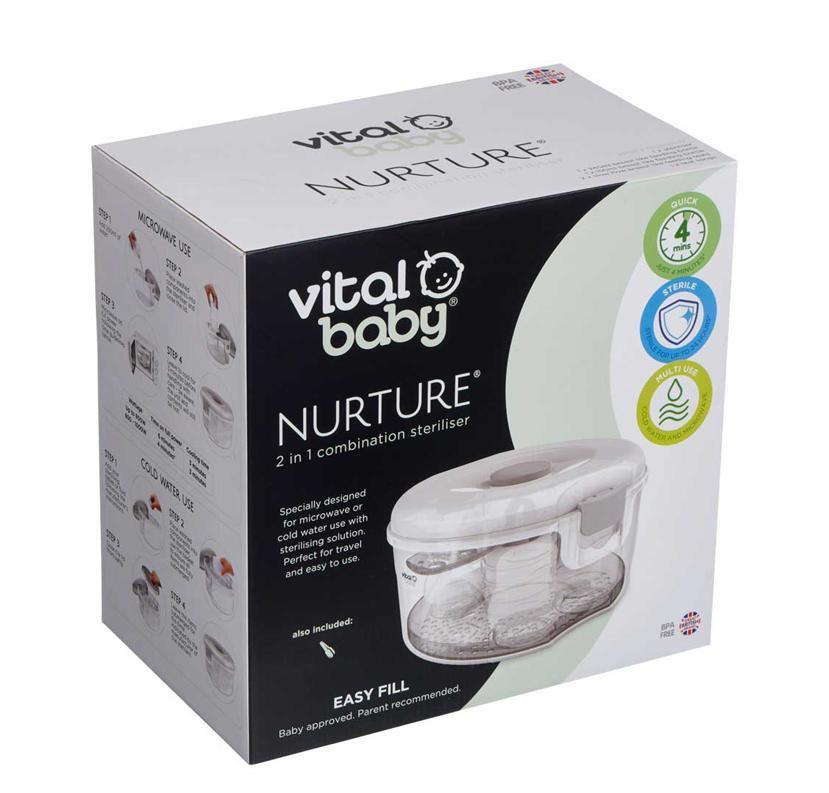

GREAT BREAST PUMP PRODUCTS FROM VITAL BABY
1. The NURTURE Flexcone Manual Breast Pump massages the breast by gently mimicking the natural suckling action of your baby to provide the most natural and effective experience.
2. The NURTURE Flexcone Electric Breast Pump behaves the same way as your baby would when feeding, offering a two-phase expression for the most effective, fast and comfortable way of promoting breast milk production.
3. The range of NURTURE Easy Pour Breast Milk Storage Bags has leak-proof seals to ensure no milk is lost when storing your breast milk in the fridge or freezer. The wide neck and free-standing base of each storage bag also make it easy to fill.
4. The NURTURE 2-in-1 Combination Sterilizer is designed to give you ultimate convenience and peace of mind, killing 99.9% bacteria to keep your baby healthy and happy. This microwave and cold-water steriliser combination offers total flexibility, depending on your needs.
5. The NURTURE Breast-Like Feeding Bottle makes transition between breast and bottle easier. When breastfeeding, your nipple naturally flattens when in your baby’s mouth. Vital Baby’s breast-like teats are designed to mimic breastfeeding, helping avoid bottle confusion.
ISSUE 28 MOTHER & CHILD 29
° ° ° ° °
1
3 4 5
2
Breastfeeding BABY
On average, an estimated five children per 1 000 in developing countries will be born with or will develop hearing loss in the first weeks of life. Identifying hearing difficulties within the first three months can significantly improve a child's overall development.
This is according to Professor Claudine Storbeck, director of HI HOPES (www.hihopes.co.za), a nonprofit that has been supporting families of deaf and hard-of-hearing babies for 16 years. Prof. Storbeck is also director of the Centre for Deaf Studies at the University of the Witwatersrand and works closely with the Netcare National Newborn Hearing Screening Programme (bit.ly/46e3tBi), in which more than 52 000 newborns have received screening since its inception in 2019.
“Hearing loss affects many aspects of a child’s life. Even in mild cases, it fundamentally influences early communication and bonding, with a knock-on effect that can impact language as well as social and cognitive development, which are all strongly linked,” she notes.
EARLY INTERVENTION IS KEY
Prof. Storbeck explains that the Early Hearing Detection and Intervention best practice process begins with screening newborns and should enable diagnosis before 3 to 4 months of age.
“If a child doesn’t pass the newborn hearing screening, it's very important that they go for a follow-up screening within four weeks, to see if the infant needs to go for a full assessment. This is done so that if a hearing loss is diagnosed, interventions can be put in place as quickly as possible. Ideally, by the age of 6 months, early intervention should have started along with the appropriate amplification.
“Mothers’ instincts can also be an important indicator, with studies showing that mothers often suspect there's something wrong with their baby’s hearing up to 12 months before it's formally diagnosed. If you suspect your child is not hearing properly, don't wait to seek a professional opinion.”

SOUND ADVICE
Hearing loss affects many aspects of a baby’s life—timeous intervention is important for overall developmentchildhood
30 MOTHER & CHILD ISSUE 28
BABY Hearing

ISSUE 28 MOTHER & CHILD 31
Support is available for families and their deaf or hard-of-
hearing infants and children
Prof. Storbeck says that support is available for families and their deaf or hard-of-hearing infants and children, and that the Netcare National Newborn Hearing Screening Programme is based on family-centred early intervention principles that involve the family at every step of the decision-making process.
“Once a baby or child is diagnosed with a hearing loss, parents are provided with the information they need and an unbiased view of all the options available in South Africa, allowing them to make informed choices about what's best for their child and their family.
“This unbiased information speaks to all developmental areas relating to a child’s hearing difficulties, and works for each family at their own pace— typically for a period of three years or so—to support and facilitate a more holistic approach to development.
“Parents have access to special programme meetings and conversations with other parents as well as members of the deaf community, and are encouraged to ask as many questions as possible. This drives the process so that parents are empowered and skilled to become partners in decisionmaking around interventions such as communication, spoken and/ or sign language, hearing aids, or in cases where it is appropriate, cochlear implants and other forms of technology,” she adds.
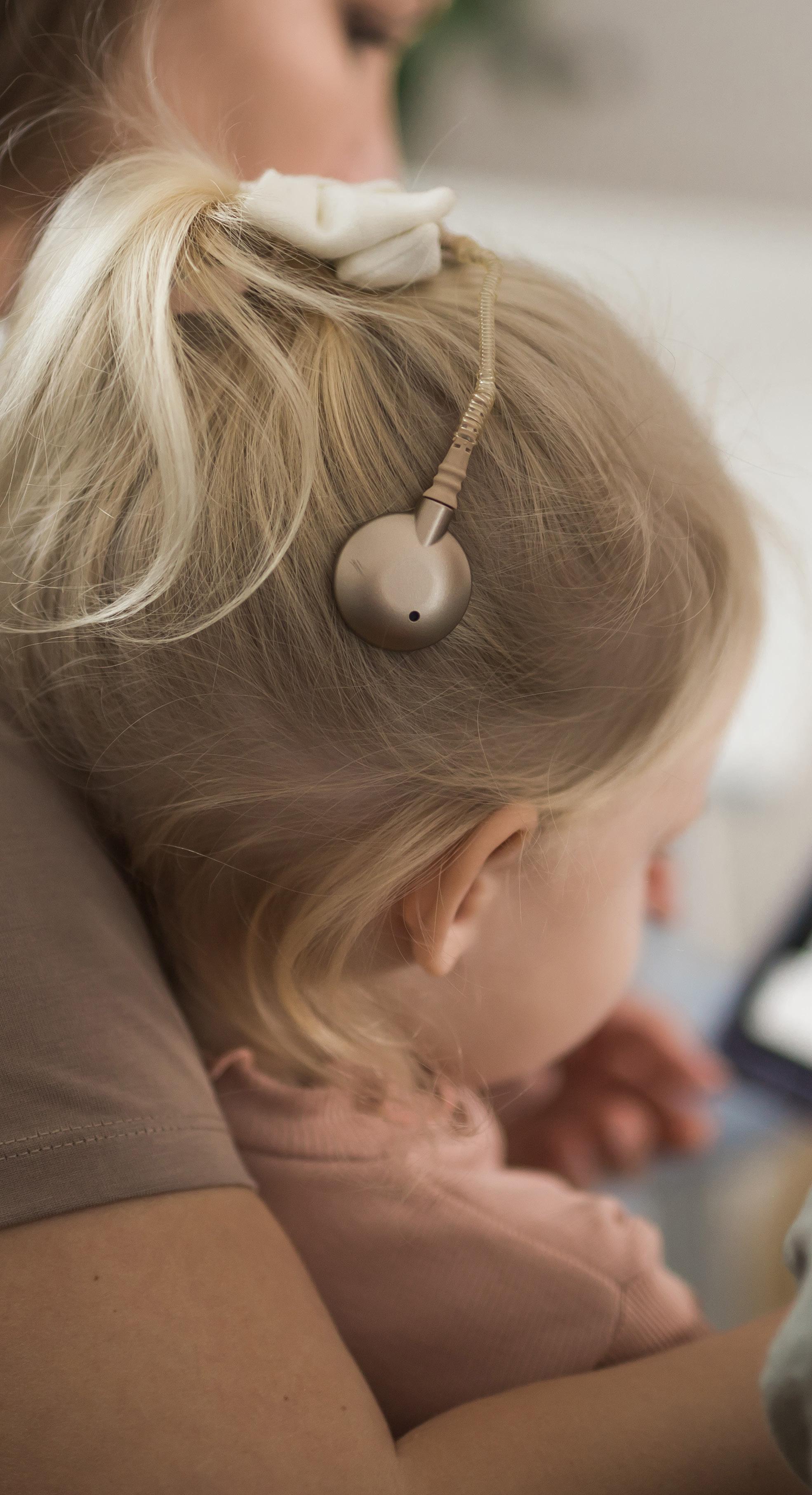
32 MOTHER & CHILD ISSUE 28
BABY Hearing











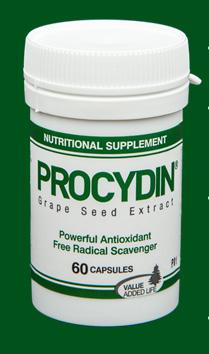












PREVENTION WHERE POSSIBLE
Approximately 50% of hearing loss in newborns is due to genetic causes, but complications and illnesses during pregnancy, as well as head trauma during birth, can result in hearing difficulties. A further factor is any medication that is ototoxic, meaning it can cause hearing loss in some infants as a possible side effect. It's therefore important to ask your doctor about this particular risk in any medication that is
prescribed to you during pregnancy and to your baby after birth.
“If your baby often has middle-ear infections, an ear, nose & throat (ENT) specialist should be consulted, as this can have an impact on their hearing. Even if only temporary, an impact on the ability to hear is a real challenge in a little person’s life,” says Prof. Storbeck.
To find out more about the services offered through Netcare hospitals and the group’s other facilities, visit www.netcare.co.za.
Approximately 50% of hearing loss in newborns is due to genetic causes
A HAPPY ENDING
Born into a silent world, little Zelmari Maree heard the sound of her parents’ voices for the very first time at the age of 9 months after undergoing successful cochlear implantation that has changed the course of her development forever.
Now, she's a chatty baby girl who demonstrates utter delight in responding to the busy noises that fill the new and engaging world around her.
According to Dr Jacobus Terblanche, an ENT surgeon practising at Netcare Kuils River Hospital, a cochlear implant is a small electronic device that helps deaf or severely hard-of-hearing people recognise sound by working around the damaged part of the inner ear so that sound signals can reach the brain.
The baby's mother, Elsje, says that although the family didn't know it at the time, Zelmari—who was perfectly healthy in every other way—was born without the ability to hear. “Within her first few weeks of life, I started noticing that she seemed unaware of noise and I began to suspect there was a problem with her hearing. After taking her for screening at 6 weeks of age, she was diagnosed with total hearing loss.
“This was heartbreaking news for our family; I really never thought anything like that could happen to us—and while it was recommended that Zelmari would be a good candidate for a cochlear implant, it was financially out of our reach,” she adds.
However, the family’s fortunes changed when Dr Louis Hofmeyr, an ENT surgeon, otologist and neurotologist, took a special interest in Zelmari’s case. Dr Hofmeyr practises
34 MOTHER & CHILD ISSUE 28
BABY Hearing
at the Netcare Christiaan Barnard Memorial Hospital and specialises in cochlear implants and implantable hearing devices. He and Dr Terblanche form part of the team at Cape Hearing Implants (capehearingimplants.co.za), a non-profit organisation that raises charitable funds to support patients in need of implantable hearing solutions.
After discussing the options with the Maree family, it was agreed that a cochlear implant was the best option for baby Zelmari and, at the age of 9 months, Dr Terblanche did the implantation at Netcare Kuils River Hospital, which assisted with certain hospital costs.
“Thanks to the efforts of this selfless team and the incredible outpouring of support from the community, we were afforded the opportunity to have this lifechanging procedure for Zelmari. Since then, she has developed astonishingly well. She can say ‘mama’, she almost says ouma, and she makes it very clear when she doesn’t want something with a firm nee,” says proud mommy Elsje.








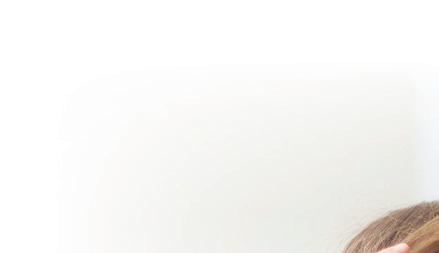










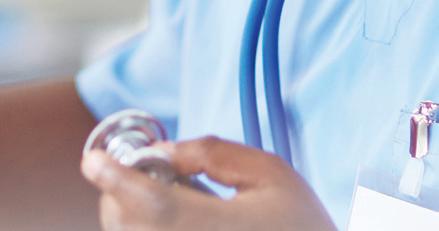




Wilderness Road, Claremont, 7700 | Tel: 021 670 4000 24-hour emergency unit: 021 670 4039 www.lifehealthcare.co.za WHEN YOUR LITTLE CHAMP OR BEAUTIFUL PRINCESS IS SICK... and needs to be admitted to hospital, our team at Life Kingsbury Hospital is here for you. The Life Kidz paediatric unit at Life Kingsbury Hospital has been designed with you and your child in mind. Our clinical team of specialists and nurses will care for and nurture your child in a unit specially designed to make them forget that they are even in hospital – beds and blankets aside! Paediatricians: Dr Rabeen Lutchman Dr Allan Puterman Dr Lara Smith Dr Hedi van der Watt Paediatric Surgeon: Dr Shalin Singh ENT Specialist: Dr Gary Kroukamp For hospital information and specialist contact details. SCAN ME

All strapped in
Accidents happen when they are least expected—ensure your little one is safely restrained in a properly installed child safety seat
36 MOTHER & CHILD ISSUE 28 TODDLERS Safety

It is not safe for a child to sit on an adult’s lap while travelling in a car.
ISSUE 28 MOTHER & CHILD 37
The power of a parent’s love can only protect a child from the massive forces of a car accident when age-appropriate car seats and safety belts are used every time a child travels in a vehicle—no matter how short the distance.
“When you see what we as paramedics have to deal with at accident scenes, you’ll understand the importance of wearing a seatbelt, and securing your child safely in a child seat,” says Charné van der Berg, Netcare 911’s critical care operations manager. “It is especially chilling to arrive at a scene and find a mother cradling her child after he’s been ejected through the windscreen. As a parent myself, I can never emphasise the importance of car seats enough.”
Over the 2022/2023 festive season, 1 451 people were killed in road accidents, down from 1 685 over the previous year’s summer holiday period, with the Transport Ministry drawing
attention to the life-saving importance of seat belts and child car seats.
In 2021, 7% of South Africa’s road accident passenger fatalities were children under 14, as noted by the Road Traffic Management Corporation. According to the most recent Statistics South Africa Causes of Death and Mortality Survey, road accidents accounted for 4.2% of non-natural deaths for babies under a year old, and 15.5% for children 1 to 14 years old.
For children under the age of 2, a rearfacing car seat on the front passenger seat is recommended, and then a frontfacing car seat on the back seat as they get older. Once children outgrow a car seat, they are still too small for conventional seat belts to be optimally effective, and need to be secured in a booster seat.
“Accidents happen when they are least expected; even a quick trip down the road can have fatal consequences if
When you see what paramedics have to deal with at accident scenes, you’ll understand the importance of wearing a seatbelt, and securing your child safely in a child seat.

TODDLERS Safety
38 MOTHER & CHILD ISSUE 28
a child is not safely restrained,” Van der Berg adds. “According to Arrive Alive, properly installed child safety seats can reduce the need for hospitalisation among children younger than 4 years by 69% in road traffic accidents.
“It is not safe for a child to sit on an adult’s lap while travelling in a car. The adult may be safely strapped in with a safety belt, but the force of a collision is so immense that the child isn’t protected at all. People often think they would be able to hold onto their child in the event of an accident, but in reality it’s not possible.”
A 2019 observational study recorded fewer than one in five child passengers using safety restraints among visitors and patients to a children’s hospital in Cape Town. Concerning was that a third of children noted in the study were completely unprotected from injury, as they were sitting on the lap of an adult.
“Although toddlers have a will of their own, and can be especially difficult when being strapped in, as the responsible adult it is up to you to make it a routine part of every car trip. It takes two minutes, and it can save a lifetime of regret.”
Seven tips for car seat safety:
• Do your research when buying a car seat. Visit the Automobile Association’s website ( bit. ly/3qVAmm3) for the relevant specifications and regulations to ensure your choice of car seat is compliant. Make sure your car seat or booster seat is quality-assured by the South African Bureau of Standards.
• Instal child safety restraints correctly according to the seat manufacturer’s instructions and check these against your car’s owner’s manual.
• Ensure your child’s car seat is right for their age and weight. Replace the seat as needed when your child outgrows their car seat.
• Make sure to check all the clips and buckles, including those securing the child seat into the car, every time you travel with your child.
• Make sure straps are tight-fitting to be effective in an accident, and to prevent driver distraction that could lead to an accident.

• Be consistent. There is no negotiation when it comes to car safety—your child or infant has to be properly secured every time.
• Avoid dressing your child in bulky clothing, as this can affect the fit of child restraints and make them less effective in an emergency. Rather, dress your child in layers of thinner fabric that will not compress under force, or put a blanket over the restraints once your child is safely buckled in.
“Even if you are the most cautious driver, there are so many variables that contribute to accidents. Without a doubt, car seats and seat belts used correctly save lives every day; unfortunately, not enough people are using them,” Van der Berg says.
“These car safety devices make a big difference to survival and minimising injuries in motor vehicle accidents. Always make sure everyone is strapped in safely, and never take a chance when it comes to car seats or seat belts.”
ISSUE 28 MOTHER & CHILD 39
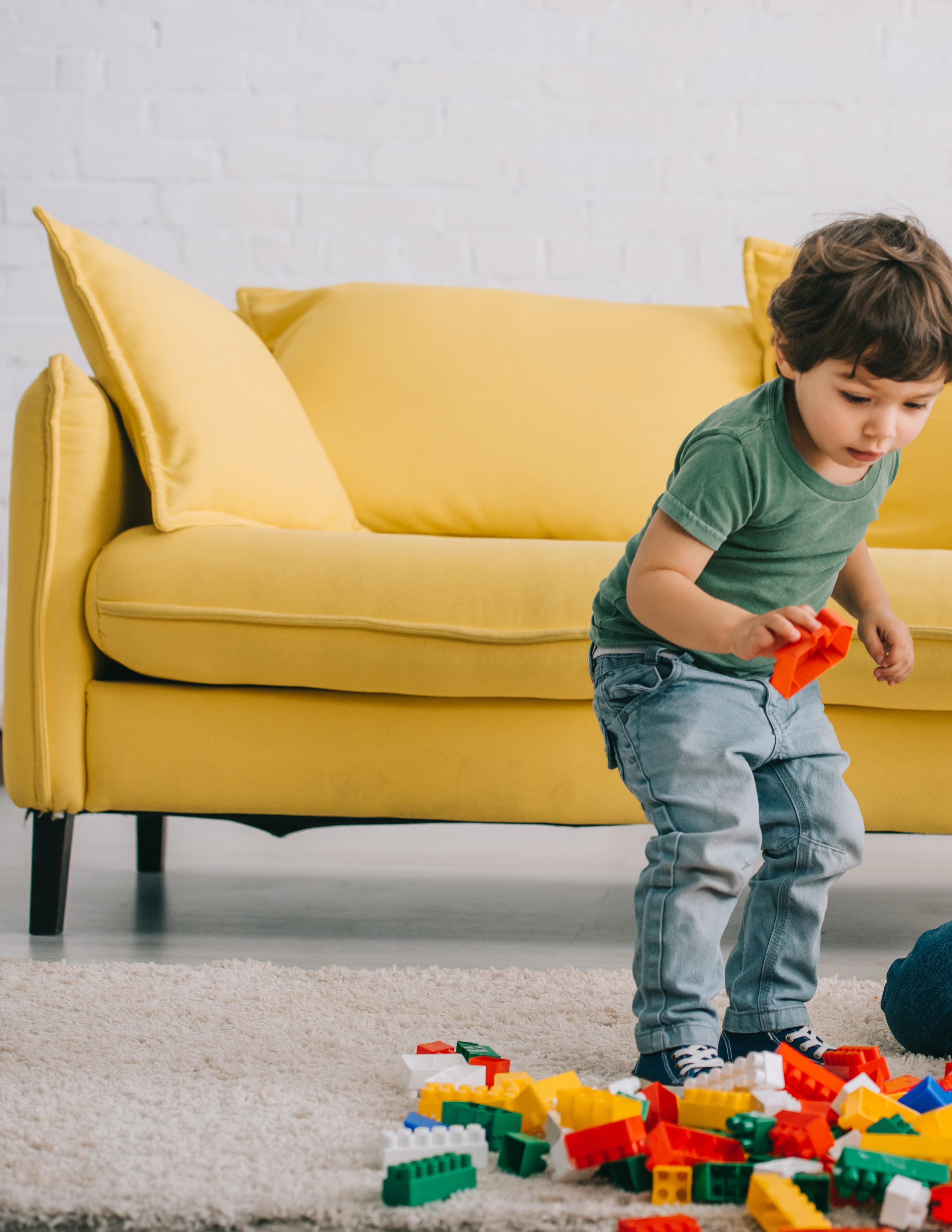

LEARNING Play 40 MOTHER & CHILD ISSUE 28

ISSUE 28 MOTHER & CHILD 41
While a toddler who's considered ‘advanced’ for their age is often a source of pride for parents or typically seen as a sign of higher intellect or development in a child, there's a great deal of merit in ensuring the child engages with activities, toys and even screen time that's appropriate to their age and stage of development.
To fully appreciate the importance of age-appropriate play, it’s important to take a step back to understand why the simple act of playing is important in the first place.
According to results from the LEGO® Play Well Study, a 2022 global survey on play conducted by The LEGO Group, nearly all South African parents who were surveyed believed play could help their child develop essential skills for future success and well-being, such as creativity (93%), communication (92%), problem-solving (92%) or confidence (91%).
“Play, in its simplest and most instinct led form—which could be as straightforward as cartwheels in the garden or wrestling with a parent— benefits children not just because it builds fond memories with loved ones, but because children learn as they play,” says Miroslav Riha, LEGO® South Africa country manager. “As children grow, their developmental needs evolve, and their play should, too.”
PARTEN’S SIX STAGES OF PLAY
Researcher Mildred Parten at the University of Minnesota’s Institute of Child Development identified six clear stages of play in children between birth and 4 years and above.
Stage one, which is between birth and 3 months of age, is termed “Unoccupied Play” , where a baby will simply make movements with their hands and feet in the process of learning how their bodies move and work. At this stage, the best way to engage baby is through touch, such as massaging their body before bed. Tummy time is also a great form of play at this age.
Stage two, termed “Solitary Play” , includes toddlers between 3 months
As children grow, their developmental needs evolve, and their play should, too.

LEARNING Play 42 MOTHER & CHILD ISSUE 28
Starting a journey of lifelong friendships and learning

St David's Marist Inanda Mini Marists is where the journey begins for the youngest members of our community, nestled within our picturesque and spacious campus in the heart of Sandton. Mini Marists is a pre-school where qualified and passionate teachers will nurture your son’s sense of wonder, and where learning is fun, explorative and experiential.





Grade 00-0, Prep Grade 1 – 7 & College Grade 8 – 12
Scholar. Sportsman
Pre-prep
Gentleman.
Contact us for a visit at www.stdavids.co.za
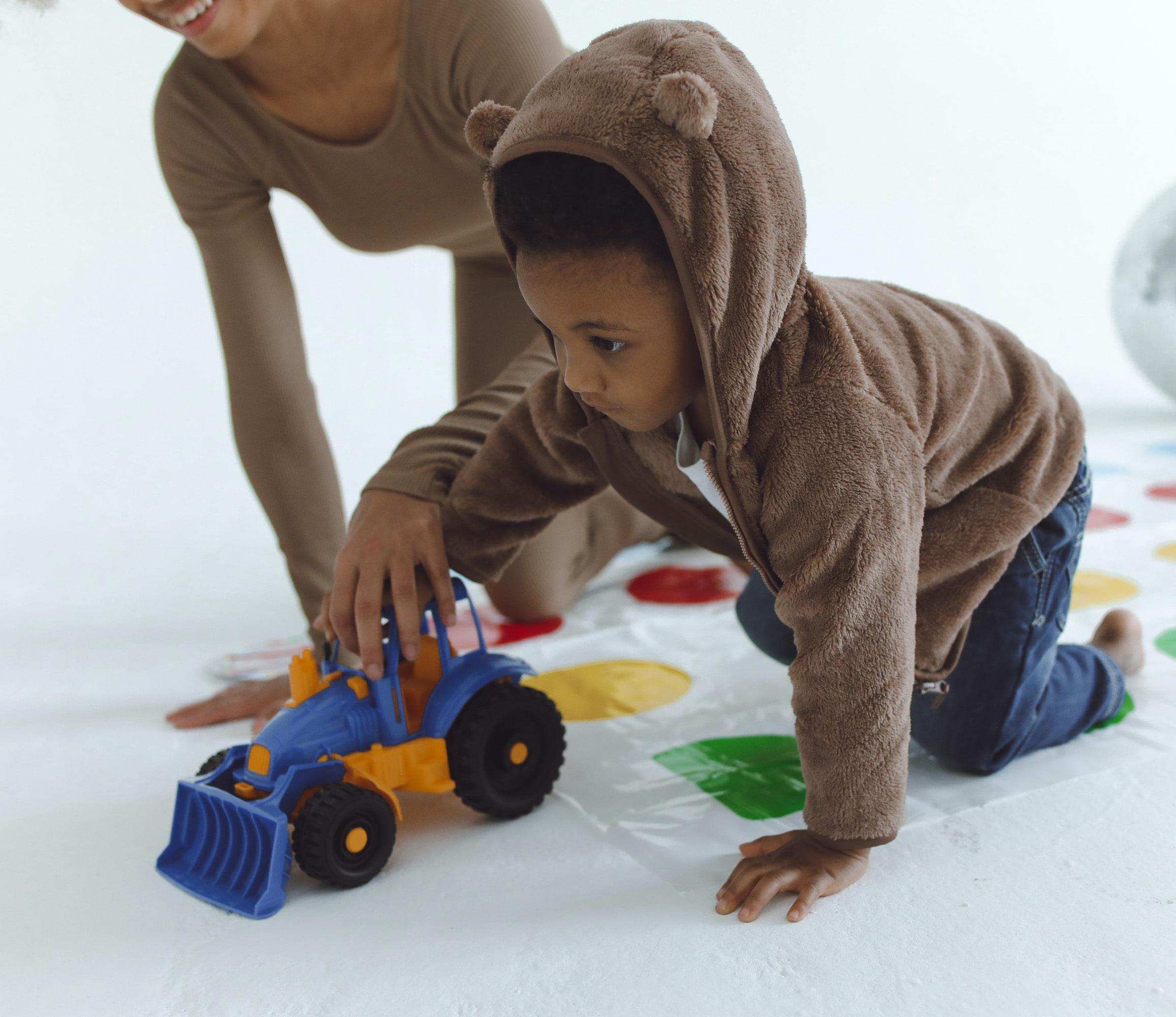
and 2 years old. Here, children tend mainly to play by themselves, and are not yet interested in playing with others just yet. During this stage, parents and caregivers can introduce bright, colourful toys that are easy to grasp and operate for little hands and fingers, such as board books and sensory play items.
Stage three is the “Spectator/ Onlooker Behaviour” period for children at the age of 2 to 3 years old. This stage is characterised by children learning to observe other children playing without engaging in group play themselves. While it can be tempting to ‘force’ or encourage children to play with others at this stage, parents and caregivers would do better to leave them be as they learn social cues and how to navigate the boundaries of others. Simply standing nearby to reassure them while they observe and continue to play by themselves is perfectly fine.
Children between the ages of 3 to 4 years old will now begin to engage in “Parallel Play” : they’re playing alongside peers, but still by themselves. It's essential to provide them with plenty of age-appropriate toys and activities at this stage which can easily
be shared between two children without a battle ensuing of whom the toy belongs to.
A box full of LEGO® DUPLO® bricks is a great example of a toy with which children can play independently while playing ‘around’ others. In this process, they are also learning the beginnings of social skills, which they'll use to engage and form relationships with others later in childhood.
“Associative Play” is the fifth stage in the six stages of play and starts at around 3 years of age. This is a pivotal stage in a child’s overall development, as it’s where their social skills truly start to take shape as they delve into playing with others and not just on their own anymore.
At this stage, riding bikes or building age-appropriate LEGO sets together are the most effective, as it gives children the opportunity to apply the knowledge they’ve observed about playing with others through their younger years and learn how to engage with peers. All these activities also boost creativity; children can make up their own fun games or use LEGO bricks to bring an idea in their heads to life.
Supporting children through the various stages of play with ageappropriate toys, activities and approaches helps them develop physically, cognitively and emotionally.
The final stage, known as “Cooperative Play” , sees children aged 4 and above work together through play to reach a common goal. This often culminates in pretend play where children take on imaginary roles (for example, in a restaurant scene as a waiter or patron). They may also make up their own fun group games to enjoy together—the sky's the limit. Parents and caregivers play an important role in this stage and should gently guide children on how to play together, for example, by providing board games or encouraging them to build structures using readily available materials.
Supporting children through the various stages of play with ageappropriate toys, activities and approaches helps them develop physically, cognitively and emotionally. It’s important to understand and plan how to facilitate play at every age of childhood so that little ones can reap as much benefit as possible from the simple, instinctive act of play.
LEARNING Play 44 MOTHER & CHILD ISSUE 28




Kids Emporium
Please allow me to introduce myself, my name is Monique Palanyandi and I am 39 years old. I was proudly raised by my single mum with my three older siblings in the Cape Flats in Parkwood Cape Town. My husband and I have been adventurously together for 20+ years and have three kids together, ages 18, 16 and 9.



Three years ago, I got the opportunity to purchase Kids Emporium Online, an opportunity I really wanted to grab with both hands. Our business specializes in quality products for parents and their little ones ranging from local to international brands. We are still a growing company working from our residence and intend to expand our reach in the coming years. Given the company’s niche footprint in the market we are aware that we need a broader reach amongst our consumers. I for one know how expensive times have become raising kids, and while we want the best for our littles ones, the budget is not always available. We want our brands to become accessible to all parents from all parts of the country. This is an initiative we are currently navigating through. All information about this initiative will be shared on our website and socials very soon.





You're not a failure
Postnatal depression in men: what new fathers need to know—and how to ask for help
BY ANDREW MAYERS
46 MOTHER & CHILD ISSUE 28

Mental health DAD MATTERS

Many people think of postnatal depression as a condition that only affects women. But in reality, postnatal depression affects almost as many men as women—with some research estimating it occurs in up to 10% of fathers.
Yet, despite how common postnatal depression may be in men, there still isn’t very much information out there about it. This can make it hard to know if you may have postnatal depression— and how to get help if you do.
Postnatal depression can happen at any time in the first year or two after the baby is born, not just in the early months.
Here’s what you need to know: WHY IT HAPPENS
There are many reasons postnatal depression happens. And, contrary to popular belief, it isn’t just due to hormones. Even in women, hormones only play a small role in postnatal depression.
Instead, postnatal depression is typically due to a combination of risk factors: such as a previous history of depression, sleep problems after the baby is born, lack of social support, or financial challenges. Postnatal depression can also happen at any age.
The symptoms of postnatal depression are quite similar to symptoms of depression. As such, symptoms of postnatal depression may include low mood, lack of motivation, poor sleep, feeling guilty or worthless, poor concentration, changes in appetite or weight, fatigue, and even thoughts of death or suicide.
The main difference between depression and postnatal depression is that these feelings tend to happen in the postnatal period (typically the first year or so after the baby is born).
It can be normal to struggle with your mental health somewhat after your baby is born. After all, it can be an overwhelming and emotional time, with nearly every aspect of your life changing: from your daily routine, your
ISSUE 28 MOTHER & CHILD 47

relationship with your partner, to the amount of sleep you get every night.
But if you’ve been experiencing low mood and lack of motivation for more than a few weeks, and are finding these feelings are making it difficult to engage with your infant, you may want to consider speaking with your GP or a mental health professional.
It’s also worth noting that postnatal depression can happen at any time in the first year or two after the baby is born, not just in the early months.
GETTING HELP
Postnatal depression is not likely to go away on its own. If you suspect you may be struggling with postnatal depression, it’s important to seek support—not only for your well-being, but because postnatal depression can also affect your bond with your baby.
First of all, there’s nothing wrong with needing help, and seeking support— either from loved ones, friends or a doctor—is nothing about which to be embarrassed. It doesn't make you weak, nor does experiencing postnatal depression make you a 'failure'.
While it can be difficult to know how to take the first step in getting support, a good starting point is
Postnatal depression is not likely to go away on its own.
simply acknowledging that this is a difficult thing to talk about. As simple as this sounds, it may just help you feel less awkward about sharing your experiences when you do speak to someone. It’s also worth remembering that when you do speak to someone, it’s important to say how you really feel— not what you feel you should say.
It’s also normal if you feel angry about feeling the way you do. Many young men who struggle with their mental health feel angry that they feel this way, or worry that they’ve let their loved ones down or that the system will not listen to them. To deal with that anger, be patient. Try to let the anger go; it may help you feel more at ease opening up about your other emotions.
You may also find it easier to talk
about your experiences in certain settings. For example, while some people may find it easier to speak with their GP or in online chat groups, you may find it more comfortable to speak up in a less formal setting—such as while watching sports with friends. You can begin this conversation with something as simple as asking how others are doing, before sharing your own feelings and experiences. Or, if your friends are also parents themselves, you may ask if any of them experienced similar feelings during the postnatal period.
If you’re finding it hard to speak to loved ones, you could also consider using a mental health app. Some people find it easier to use an app to ask questions, find solutions and discuss how they’re feeling. Apps, such as DadPad (thedadpad.co.uk), have a number of resources that can help you navigate fatherhood.
Postnatal depression in fathers is real and it does matter. Fortunately, compared to just a few years ago, there’s more awareness and help available than ever before.
Andrew Mayers is a principal academic in Psychology at Bournemouth University.
MATTERS Mental
48 MOTHER & CHILD ISSUE 28
DAD
health







"I JUST CAN'T ANYMORE!"
Exhausted, disconnected and fed up... What is ‘parental burnout’ and what can you do about it?
BY ALAN RALPH
50 MOTHER & CHILD ISSUE 28 PARENTING Burnout
Research reports two in five parents feel tiredness impacts their ability to be the kind of parent they want to be

For many parents, the reality of juggling the demands of caring responsibilities on their time, energy and resources leaves them with little time to take care of their own well-being. This can result in 'parental burnout'.
Although the exploration of parental burnout is relatively new, research has identified it as a prevalent issue across global communities and cultures. It’s reported in countries around the world, with the highest prevalence rates rising to 8% of parents in Poland, the United States and Belgium.
You could be forgiven for thinking
there’s a simple solution to this growing concern: relax and get some sleep! But, the reality can be far different.
4 SIGNS OF PARENTAL BURNOUT
Parental burnout is not just a buzzword; it’s a growing syndrome that results from chronic parenting stress. It is characterised by four main symptoms for parents:
• Experiencing physical or emotional exhaustion—or both;
• Feeling shame about their parenting, or that they’re not as good a parent as they used to be;
• Feeling overwhelmed or 'fed up' with the role of being a parent; and
• Feeling emotionally disconnected from their children.
Despite many feeling this way, recent research shows 60% of parents don’t routinely do anything to relax and recharge. This research reports two in five parents feel tiredness impacts their ability to be the kind of parent they want to be, and nearly half of all parents think there’s not enough time in the day to get everything done.
And that’s the conundrum. It can be hugely challenging for caregivers to carve out time and space to look after themselves. But when they do, it can have a positive impact on their physical and mental health, which can help them
ISSUE 28 MOTHER & CHILD 51
manage the demands of parenting so that children and families benefit, too.
4 POSITIVE THINGS PARENTS CAN DO
So, what can parents do to help prevent or reduce burnout when they’re already stretched so thin? Here are four things to explore:
1
BE LESS CRITICAL OF YOURSELF.
As parents, we can all have days when we don’t feel like we’re doing our best. We may feel disconnected from our children, or emotionally and physically drained. This is where 'self-compassion' comes in: being a little kinder to ourselves when we feel stressed or experience setbacks. Not only is this good for parents, but it can be a key life skill they can model for their children.
Even though it can be overlooked, or its importance downplayed, selfcompassion is a crucial form of selfcare. Moreover, research has shown parents who are kind to themselves and prioritise self-care have better overall health and well-being. They also feel more confident in their parenting skills and have more positive interactions with their children. And parents' well-being, confidence and positive interactions
Selfcompassion is a crucial form of self-care.
with their children are strongly linked to better outcomes for children, including those with mental health challenges or disability.
Even if you make mistakes or your inner critic starts chiming in, try to reframe its voice into a more positive one. Remember, everyone faces challenges and there is no such thing as a perfect parent or child. Adopting this mindset can help.

REFRAME SELF-CARE.
that may only take a few minutes, or even seconds, but can set up positive patterns that can help parents feel more balanced. Something as simple as pausing to take some slow, deep breaths, going for a short walk in the fresh air or chatting with a supportive friend can help. Even minor actions can add up over time to help parents navigate ups and downs more positively.
ASK FOR HELP.
4 2
As a parent, it’s common to put your own needs last and see selfcare as an optional extra: something that takes precious time away from the responsibilities of parenting, or simply so low on the long list of priorities that it slips off.
However, taking care of yourself is the opposite of being selfish. Parents who prioritise self-care tend to be less self-critical and have better physical and mental health. They also feel more skilled and confident as parents, are able to focus on parenting tasks better— even during stressful times—and are more likely to enjoy parenting.
It can be helpful to remember self-care isn’t just a 'nice to have' option. And it’s not selfish to put your needs back into the picture—rather, it’s an important parenting skill that benefits everyone.
3
REMEMBER THAT SMALL, EVERYDAY MOMENTS OF SELF-CARE HAVE A BIG IMPACT.
The concept of self-care is often portrayed as a special treat or occasional, expensive indulgence. However, it can be more about those small, every day, under-the-radar actions
Parental burnout is one part of a larger conversation around the realities of being a parent. There are often multiple factors at play that can contribute to burnout, such as lack of support, high levels of responsibility, the impact of natural disasters, looking after ageing parents and financial concerns.
It’s important for parents to be mindful of the signs of burnout, and to seek help where needed. By addressing this issue as one important part of the broader parenting journey, we can work toward creating more resilient, positive family environments for parents and children alike.
It's important to acknowledge that it's usually women who shoulder more of the caring load. Partners, employers and extended family should be on the lookout for signs of burnout and offer help before they are asked. Offering flexible work arrangements may be helpful, especially for those (for example, single parents) who may be doing it tough.
If parental burnout is affecting your day-to-day life, seek help through your GP or health professional.
Alan Ralph is an honorary principal fellow at the School of Psychology at The University of Queensland.

PARENTING Burnout 52 MOTHER & CHILD ISSUE 28
UNLOCK A CAREER
TAKE

ONLINE
FROM GRADE
Discover a fascinating career in Marine Sciences! This exciting new school subject for FET learners connects young people to the ocean through a unique multidisciplinary curriculum, building connections between the realms of water, sediments, rocks, air, and marine organisms and looking at human interaction with each.



Call: +27 (0)21 814 4544
Email: education@aquariumfoundation.org.za
MARINE SCIENCES AS AN ADDITIONAL SUBJECT ONLINE FROM GRADE 10 TO 12
The Two Oceans Aquarium Foundation offers Marine Sciences as an additional school subject, which can be taken online from anywhere in the country – simply email education@aquariumfoundation.org.za today to find out how to register for Marine Sciences in 2024 IN
MARINE SCIENCES
It’s a one-of-a-kind school subject for any learner eager to feel more connected to South Africa’s ocean and looking for blue opportunities in their future.
www.aquarium.co.za/foundation
10 TO 12
RANDS SENSE&
How to teach your children age-appropriate money lessons— and how to make these count

54 MOTHER & CHILD ISSUE 28 FINANCES For kids
Most of us get our formative attitudes about money from our parents, and these will generally shape our outlook for the rest of our lives. So, what are the financial fundamentals you should be passing on to your children—and when?
A University of Cambridge study, commissioned by the United Kingdom’s money advice service, found that by the age of 7, most children are capable of grasping the value of money, delaying gratification and understanding that some choices are irreversible and will cause them problems in the future.
A University of London study in 2000 of South African children aged between 7 and 14 bore this out. It found that their views about banking and money were similar to those of children in other countries, although rural children had less understanding than their urban peers.
Neven Narayanasamy from specialist loan provider DirectAxis, and a father of two, says the earlier children can start learning about money, the better. “In doing so, it’s best to take a positive, practical reward-based approach— explaining money is a tool, and if they understand how to work with it, it can bring benefits. Don’t stress or scare them, and remember that every child is different so you may need to amend
Have a savings jar or piggy bank into which you can put birthday money or small rewards for helping out, good behaviour or achievements.

your approach and timing.”
He says making your money lessons age-appropriate is also important, and suggests the following guidelines:
AGE 3 TO 5: YOU CAN’T ALWAYS GET WHAT YOU WANT, RIGHT NOW.
The Rolling Stones were right when they first sang, “You can’t always get what you want”, in 1969. Fifty-four years on, they still are. We live in an era of instant gratification, from
takeaway foods to online shopping. While, hopefully, your 3-year old isn’t ordering superhero outfits online during naptime, teaching children early that some things are worth waiting for may prevent them racking up credit card debt on trendy clothes or the latest tech in later life.
If your child wants a particular toy, explain they’ll have to save for it. Have a savings jar or piggy bank into which you can put birthday money or small rewards for helping out, good behaviour or achievements.
ISSUE 28 MOTHER & CHILD 55
You can teach the basics of financial decisionmaking by explaining financial priorities.
Set them up for success by making sure the goal is achievable and that they don’t have to wait months and lose sight of what they are saving for.
Each time your child adds money to the savings, help him or her count it and work out how much more is needed to achieve the goal.
“It’s a good idea to let younger children handle cash under our supervision. Physically handing over money and counting it will make them more confident about handling money and think a little harder about how they spend it.”
AGE 6 TO 10: YOU’RE RESPONSIBLE FOR THE FINANCIAL CHOICES YOU MAKE.
You can teach the basics of financial decision-making by explaining financial priorities.
As an example, tell them that when you get paid, you first need to pay bills such as the home loan or rent. Then you need to buy groceries. If you do this carefully and don’t spend money on things that are too expensive, of which you don’t really need, you’ll have something left over. You can save some and a bit may be used for doing something fun together.
Practical experience is the best way to drive these lessons home. When they earn pocket money for doing tasks around the house, help them work out a budget.
First, they’ll need to pay 'bills', such as contributing to a pet’s upkeep. Take them along when you buy groceries; if they want something special, get them
to contribute as part of their grocery spend. Remind them not to spend all their money, as they’ll need to save some. Hopefully, if they’ve not spent too much, they’ll have some left with which to treat themselves.
“The point is to give children a practical understanding of how to manage money using examples that are familiar. The more you can do this, the better, as they’re far more likely to grasp this then abstract explanations,” says Narayanasamy.
AGE 11 TO 13: THE SOONER YOU START, THE SOONER YOU’LL REACH YOUR GOALS.
This is when you can introduce the idea of saving for long-term goals. Perhaps set a goal for something expensive that he or she really wants.

Often in these pre- or early teen years, children are reluctant to save because they want to buy things such as snacks at school or more airtime/data. By setting a bigger goal, you can teach them that the opportunity cost—what they need to give up—will enable them to save more and reach their goal faster.
You can also teach them about compound interest: how, by saving over a longer period, they benefit from the compounding effect because they earn interest on the money they’ve saved as
well as the accumulated interest.
Of course, when saving larger amounts of money, it’s sensible and safer to replace the piggy bank or savings jar with a bank account. Some banks offer under-18 transactional account with no fees, such as FNBy (www.fnb.co.za/FNBy/index.html). This will also teach them how to manage a bank account.
AGE 14 TO 18: UNDERSTAND HOW TO BORROW SENSIBLY.
As children grow up, their earning potential increases. They may graduate from doing household chores to getting a casual job. Typically, their expenses also increase. They may want to buy a scooter or motorbike to get around, or even save toward a car.
At some point they’ll probably ask to borrow money. When they do, set a goal in terms of what they’ll need to earn before you’ll match them or lend them the remainder.
Work out a reasonable period for the loan and a repayment schedule and charge them a moderate interest rate. Explain there’ll be penalties if they miss repayments and you’ll also be less likely to lend them money in future. While they’ll probably think you’re being a bit harsh, you’re teaching them an invaluable lesson about the benefits of paying what they owe on time and also how to build a good credit record.
As they get older, you can use a similar approach to teach them the difference between good and bad credit, such as loans for tertiary studies or starting a business as opposed to borrowing money to fund an unaffordable lifestyle.
As a parent, teaching children about money isn’t something you’ll ever stop doing. Perhaps the most important lesson is to remember you’re a role model.
“If you’ve ever heard a child use a grown-up word or expression they didn’t learn at school, you’ll know they respond to everything they hear or see around them. The same applies to how they learn about money. Remember that and the influence you have—not only in terms of what you teach them but your own financial behaviour,” says Narayanasamy.
FINANCES For kids 56 MOTHER & CHILD ISSUE 28

































































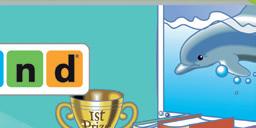








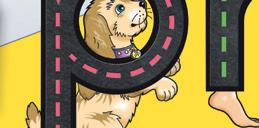






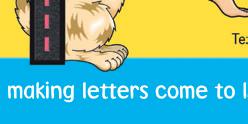



















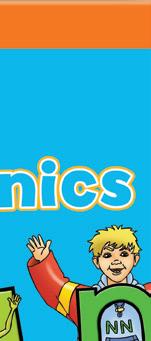




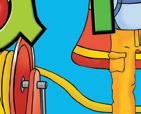




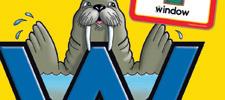






















Child-friendly phonics Literacy comes to life Helping children to read, write and spell the fun way for over 45 years! Customer Services Email: info@mml.co.za Tel: 021 532 6008 Visit www.letterland.com for more information and to download free resources.
IN LIFE START BEST THE
Today, parents are facing a range of challenges when it comes to feeding their kids well to support optimal physical and cognitive development. Here's how you can provide good nutrition to school-going kids
While there's so much today that's trumpeted as ‘convenient and easy’, many parents feel overwhelmed by the complexities and stresses of modern life. Time is always too short. Family life is often frenetic, overloaded with arduous work, school and social schedules.
In the midst of all this turbulence, we’re striving to do the very best for our kids, including getting sufficient good food down their gullets every day.
Parents face a range of challenges when it comes to making sure their kids get the nutrition they need to support optimal physical and cognitive development. Many children are picky or fussy eaters. Loadshedding is constantly disrupting food preparation and family mealtimes. Prioritising the time needed to commute through traffic
to and from school and work cuts into our family time, and we’re eating far more meals on the go. The world is awash in fast foods, convenience meals and nutrient-poor treats and snacks that our kids can easily grow to prefer over healthy home-cooked fare. High prices are narrowing the choices of food we can afford.
Vanessa Clarke, a registered dietitian and spokesperson for the Association for Dietetics in South Africa (ADSA), says: “With the rise of convenience food and easy access to take-aways through home deliveries and drivethru’s, it's becoming harder for parents to ensure children consume balanced meals. Unfortunately, convenience and fast-food meals are often short on servings of vegetables and fruit, low in fibre and protein, while higher in saturated fat and salt.
“Children are also often powering through their school day on energy and sports drinks instead of prioritising

58 MOTHER & CHILD ISSUE 28 NUTRITION Schoolchildren

ISSUE 28 MOTHER & CHILD 59
NUTRITION Schoolchildren
nutrient-dense meals made from whole foods.”
While good nutrition is important at every age, school-going children are particularly vulnerable to the impacts of poor diet. Of course, healthy eating helps to grow strong bodies, muscles, bones and teeth, but it also affects brain development and cognitive performance, as well as mood. Balanced meals play a vital role in having a welladjusted child who is better equipped to meet the demands of a busy school day.
CREATING A FAMILY CULTURE OF HEALTHY EATING
As a parent of a school-going boy, another ADSA spokesperson and registered dietitian Thembekile Dhlamini is facing the same challenges as the parents she advises. “I understand parents who are challenged by their children’s diet at home and at school because I'm one of them. When my son started school, I'd buy good sources of all nutrients to support his development, but he didn't want any of the options that were given to him. His teacher noticed he was throwing away food from his packed lunchbox. I had to shift my tactics.
“Now, I make sure that he eats homecooked porridge or oats enriched with peanut butter before school, and I give him light lunchbox options such as fruit, yoghurt, nuts and water. After school, we sit together and eat a healthy homecooked lunch with a variety of foods.
“As parents, we must be role models for healthy eating and make a healthy lifestyle part of what we value as a family. We need to take our children’s preferences and habits into account, make sure they understand healthy eating, and reinforce this at home to ensure our children can perform well at school,” she adds.
Dietitians agree that involving children in meal preparation is a way to inspire healthy eating and can help make picky and fussy eaters more curious about trying a wider range of foods. Finding enjoyment and togetherness around making and sharing food as a family helps build a culture of healthy eating and encourages learning about nutrition and the role of different nutrients in maintaining healthy bodies.
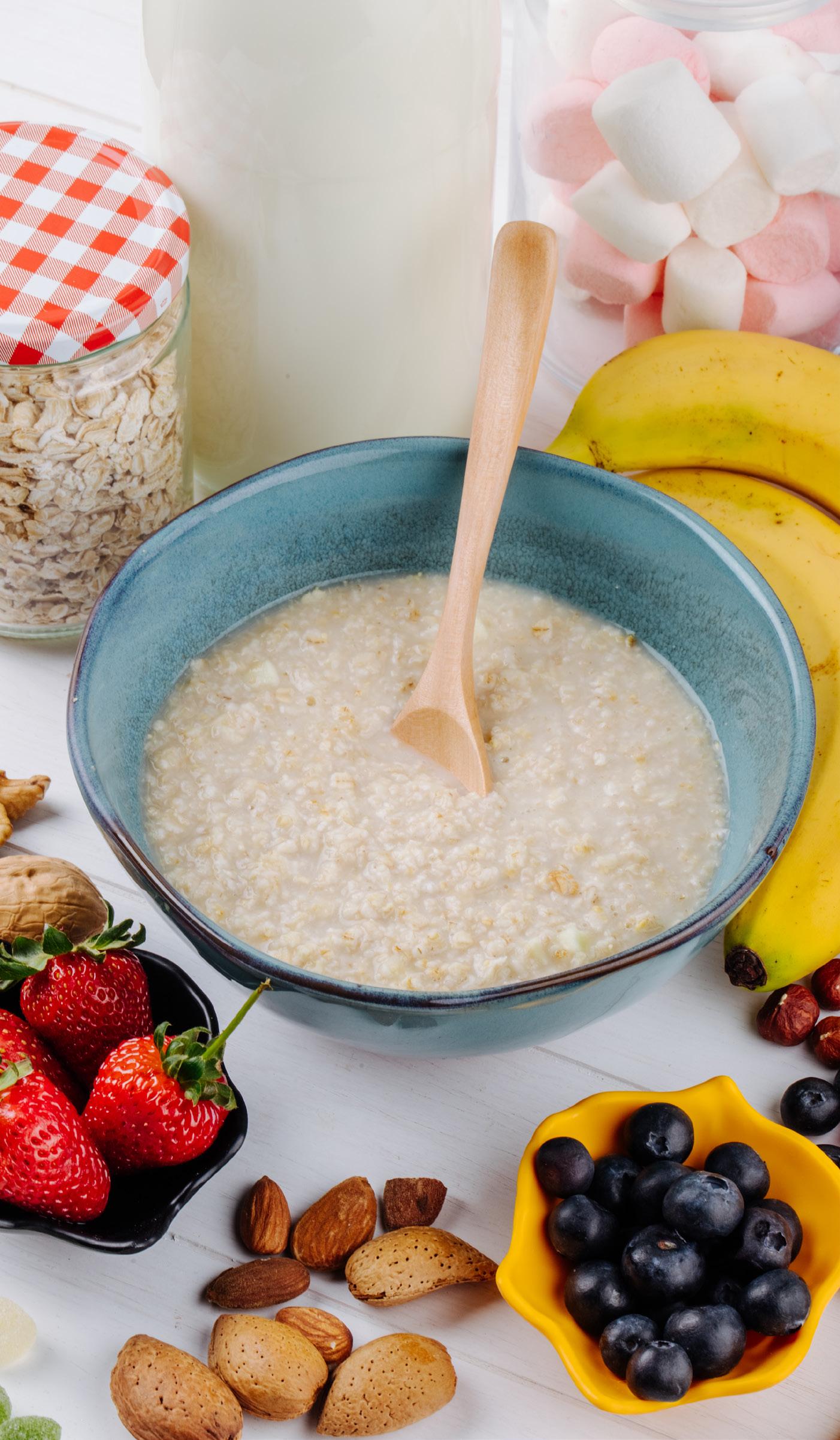
Balanced meals play a vital role in having a well-adjusted child who is better equipped to meet the demands of a busy school day.
60 MOTHER & CHILD ISSUE 28

ESSENTIAL NUTRIENTS FOR NOURISHING BRAINS AND BODIES
Clarke says, “Supporting the energy demands of school-going children is key. Just like adults, children require energy in three forms: They need protein to support the everyday functions of the cells in their bodies; high-fibre carbohydrates for a steady supply of glucose for their brains and bodies; and healthy fat that supports brain health as well as helps children's bodies absorb crucial vitamins such as vitamin A, D, E and K.
“Along with meeting children’s energy needs, adequate calcium and vitamin D intake is essential at schoolgoing age, as 50% of a person's bone mass is acquired between the ages of 9 and 18 years.”
Some kid-friendly, affordable, nutrient-rich food options include:
• Yoghurt, cheese and milk provide
both protein as well as calcium and essential vitamins.
• A peanut butter sandwich on wholewheat bread provides carbohydrates and healthy fats.
• A wholewheat sandwich with a filling of omega-3 rich fish (pilchards, mackerel) provides carbohydrates, protein and healthy fats for brain function.
• Carrot and cucumber sticks with a hummus dip provides a high-fibre, vitamin-rich serving of fresh veg as well as protein from the chickpeas.
• Eggs are a versatile food that can be included in lunchboxes and meals in many ways. In addition to protein, eggs provide iodine, which plays a role in brain development and thyroid function.
• Beans in a wholewheat wrap or roll is a great way to provide both carbohydrates and protein at the same time to school-going children.
• A banana before or after extracurricular activities can help boost energy.
• Water should always be the first choice to meet the fluid demands of a child. Add fruit such as strawberries, lemon or orange slices for extra flavour.
• For balance, always include fresh vegetables and fruits in lunchboxes. Add nuts, such as walnuts, if you can.
In a time of shrinking household budgets, rising food costs and a power crisis, many families are preparing extra food at dinnertime so they have leftovers of a home-cooked meal the next day.
“A bit of planning, shopping and cooking in bulk can help you save on food costs and reduce your energy use,” Dhlamini says. “It also increases your family’s access to home-cooked meals and limits spending on nutrient-poor convenience or take-away foods.
“We all want to give our children the best start in life, and it's worth getting creative and smart when it comes to providing our kids with the balanced meals they need to thrive.”
ISSUE 28 MOTHER & CHILD 61

Keep it SIMPLE
Easy-to-make recipes covering meals for the whole family—and for any time of day
PAN PIRIP I R I C H I C K P E A S
Flexitarian Footnote Fry 200g diced bacon or chorizo with the onion, garlic and harissa paste.
ONE-
62 MOTHER & CHILD ISSUE 28
What's for dinner? NUTRITION
In her sixth cookbook Good + Simple, Sarah Graham continues to celebrate an abundance of vegetables and natural wholefoods in her same simple and accessible style. It's the result of learning how to live, cook and eat through a global health pandemic.
Good + Simple offers a collection of wholesome and delicious recipes for the whole family, specifically designed to be easy to achieve with simple ingredients. Covering a variety of dietary preferences and needs, simple substitutions for the occasional meateater, and including five-ingredient and one-pot dishes, the book makes cooking and meal planning easy, enjoyable and memorable.
Here's a foretaste of Sarah's wonderful dishes:
ONE-PAN PIRI-PIRI CHICKPEAS
Serves 2
INGREDIENTS
Olive oil
1 red onion, diced
1 heaped tsp crushed garlic
1–2 tbsp harissa paste
1 can chickpeas, drained and rinsed
1 can whole peeled tomatoes, roughly chopped
1 tsp sugar or honey
2 generous handfuls baby spinach
Salt and black pepper, to taste 1 tbsp Greek yoghurt
1 tbsp each chopped fresh flatleaf parsley and basil
To serve
1 cup Greek yoghurt mixed with ¼ cup hummus + 1–2 tsp extra harissa paste stirred through Fresh lemon zest and a squeeze of juice
Couscous, flatbread or pita bread, warmed
METHOD
1. Add a dash of olive oil to a large frying pan over medium heat. Fry the onion, garlic and harissa paste for about 6 minutes, until the onions have softened.

SPEEDY MUSH
2. Stir in the chickpeas and tomatoes, along with the sugar or honey, and simmer for 10 minutes.
3. Add the spinach and season with salt and black pepper.
4. Swirl through the yoghurt, scatter over the parsley and basil, and serve immediately.
SPEEDY MUSHROOM STROGANOFF
Serves 4
INGREDIENTS
2 tbsp olive oil, plus extra 1 medium onion, diced
1 clove garlic, finely chopped
1 tsp smoked sweet paprika
800g mixed mushrooms, chopped
1 cup good quality vegetable stock
1 tbsp Worcestershire sauce
1 tsp Dijon mustard
¹/³ cup crème fraîche or Greek yoghurt
1 cup basmati or brown rice Chopped fresh parsley, to garnish
METHOD
1. Heat the olive oil in a large pot over medium heat. Add the onion and garlic, and fry for about 8 minutes, or until the onion has softened. Add the paprika, stir, then transfer to a bowl.
2. Add another dash of oil to the pot and fry the mushrooms for about 10 minutes over mediumhigh heat, until golden and caramelised.
3. Return the onion-garlic mixture to the pot. Stir in the stock and Worcestershire sauce, and simmer for 10 minutes with the lid off, or until thickened to your liking. Then, add the mustard and crème fraîche. Stir together then remove from the heat.
4. Meanwhile, in a separate pot, cook the rice according to the packet instructions, until fluffy. Serve the rice in warmed bowls topped with the stroganoff. Garnish with a little chopped fresh parsley.
R O O M S T R O G A N O F F
ISSUE 28 MOTHER & CHILD 63
NUTRITION Whats for dinner?

BROCCOLI AND CHEDDAR SOUP WITH CAMEMBERT & CARAMELISED ONION SOLDIERS
Serves 4
INGREDIENTS
1 tbsp olive oil
250g leeks, roughly chopped
1 large onion, chopped
1 clove garlic, chopped
1 tsp dried mixed herbs
1 large head broccoli, trimmed and roughly chopped
3 cups good quality vegetable stock
1 cup milk
1 cup grated mature cheddar Salt and black pepper, to taste
For the camembert and caramelised onion soldiers
8 slices of your favourite bread
1 jar caramelised onion marmalade Camembert cheese, sliced Butter
To serve (optional)
Toasted mixed seeds, chopped fresh Italian parsley, sprinkling of grated hard cheese
METHOD
1. Heat the olive oil in a large pot over medium heat. Add the leeks and onion, and cook for 8–10 minutes, or until softened. Add the garlic and mixed herbs, and cook for another minute.
2. Add the broccoli, stock and milk, and simmer for another 15 minutes, or until the broccoli is tender and can be easily pierced with a knife. Remove from the heat and stir through the grated cheddar.
3. Allow the mixture to cool slightly, then blend to your desired consistency and season to taste.
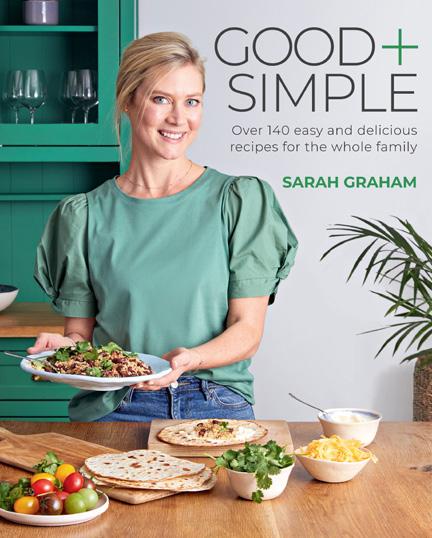
Recipes B R O C C O L I AND CHEDDAR SOUP
64 MOTHER & CHILD ISSUE 28
4. Meanwhile, prepare the soldiers. Make 4 sandwiches filled with onion marmalade and slices of camembert. Lightly butter the outside of each sandwich and fry in a non-stick pan until the cheese is melted and the bread is golden on both sides. Cut each sandwich into soldiers and serve immediately with bowls of the hot soup. and images from Good + Simple by Sarah Graham (R390). Published by Penguin, 2023. Used with permission.


A MINDFUL
66 MOTHER & CHILD ISSUE 28
TRAVEL Well-being

MINI BREAK
The Steenberg Hotel & Spa in the heart of the Cape Winelands is the perfect getaway for mums and dads to prioritise their mental health
ISSUE 28 MOTHER & CHILD 67
Mini and weekend getaways are a wonderful way to escape the daily routine and rejuvenate our mind and body. In today's fastpaced and hyperconnected world, we're constantly inundated with stimuli ranging from notifications and e-mails to deadlines and responsibilities—all of which have an impact on our mental health.
By taking regular breaks, we can alleviate stress levels, boost our mood, and enhance our overall sense of happiness and well-being, making us better parents to our children. Take some time out and leave the kids in the care of grandma and grandpa or another trusted guardian.
Not only do these breaks offer a much-needed respite from the hectic routine, but they also serve as an ideal way to explore new places, detach ourselves from technology, spend quality time with our partners, challenge ourselves and gain fresh perspectives.
To ensure your mini break has a substantial positive impact on your mental health, however, there are a few requirements to consider while planning the perfect getaway.
Firstly, opt for a peaceful location that enables you to connect with nature. The right ambiance can set the tone for a truly restorative getaway.
The Steenberg Hotel & Spa—situated in the heart of the Cape Winelands, just 25 minutes from central Cape Town— satisfies all the criteria for this purpose. Surrounded by stunning natural landscapes of rolling hills, vineyards and fynbos, the hotel offers abundant opportunities for guests to explore and immerse themselves in nature through activities such as hiking, biking, birdwatching and nature walks.
In addition, the hotel is located on the doorstep of several nature reserves such as the Table Mountain National Park, which boasts a diverse range of flora and fauna including unique bird species, baboons and even zebras. Guests can choose to take guided tours or explore independently to appreciate the natural beauty of the area. Furthermore, the hotel itself features a magnificent garden teeming with indigenous plant

By taking regular breaks, we can alleviate stress levels, boost our mood, and enhance our overall sense of happiness and well-being




68 MOTHER & CHILD ISSUE 28
TRAVEL Well-being





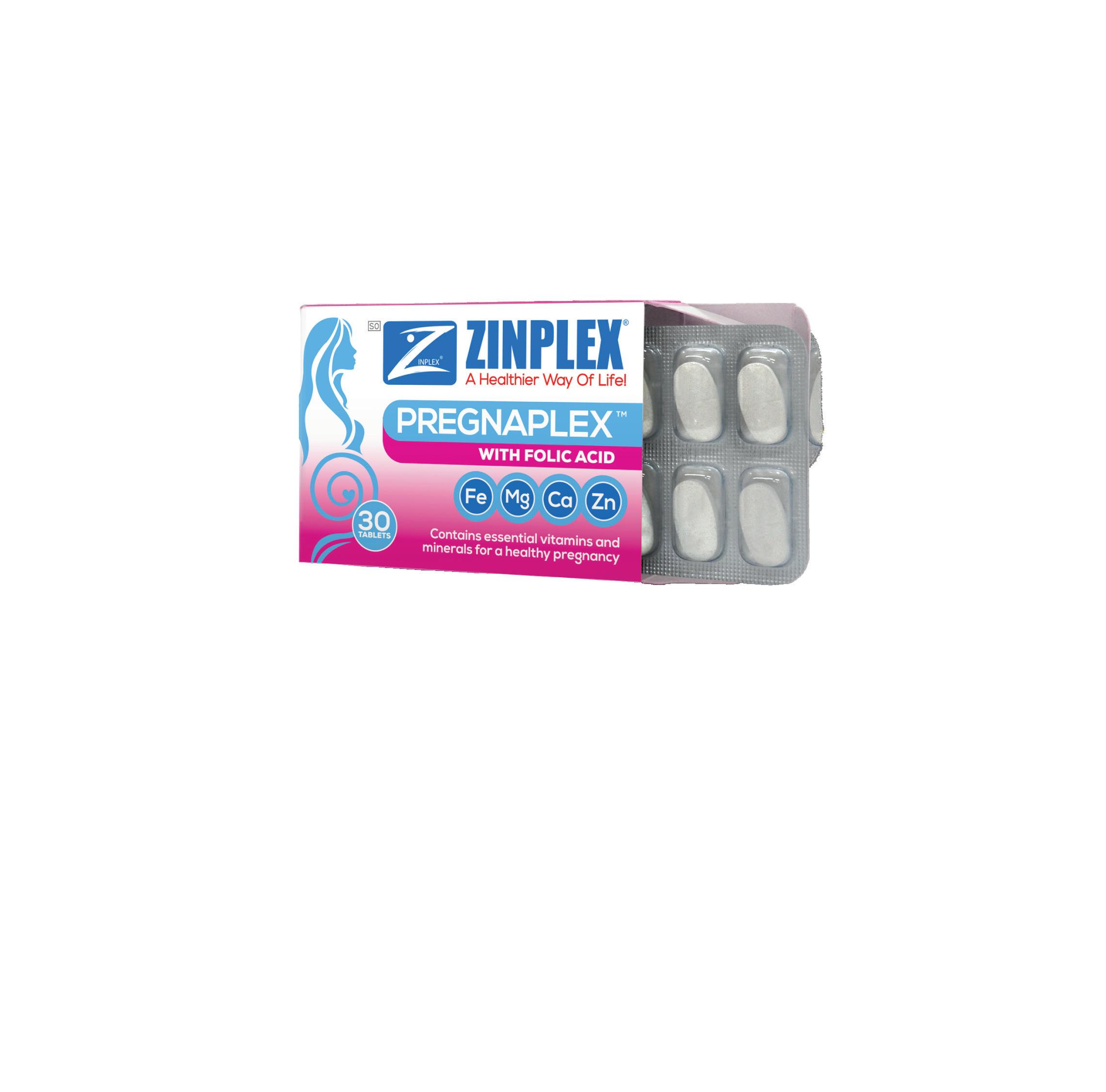


species. Enjoy a leisurely stroll through the enchanting gardens, or relax and unwind on one of the terraces while taking in the breathtaking views.
Secondly, choose a retreat that prioritises self-care to reduce stress and enhance your health and wellness. Make time for activities that bring you joy, such as curling up with a book beside the fireplace in the hotel's cosy library or treating yourself to a luxurious spa experience at the tranquil, newly renovated Steenberg Spa. The latter boasts an array of treatments and therapies, ranging from hot oil massages to detoxifying body wraps—all designed to provide numerous benefits for your skin and body (see box opposite for examples).
Thirdly, finding time to connect with loved ones can be challenging; however, social interaction is crucial for our overall well-being. Fortunately, weekend getaways offer the perfect opportunity to spend quality time with your partner, away from the stresses of home. Strengthen your relationship and create unforgettable memories by bonding over wholesome food and wine.
Steenberg's signature fine-dining restaurants, Tryn and Bistro Sixteen82, offer a culinary experience that will leave a lasting impression on you and
your loved one. The chefs prepare each dish with the utmost care, using only the finest local and seasonal ingredients to create heart-warming menus. The Western Cape is widely celebrated for its wine regions, and among them Steenberg Vineyards stands out for its exceptional wines and MCCs that have earned numerous awards.
Immerse yourself in a variety of wine-tasting experiences at the Tasting Lounge. The inviting atmosphere of the lounge encourages you to relax and bask in the soft orange glow of the flickering fireplace. Sink into plush couches and enjoy the company of your partner while savouring Steenberg's exceptional wines.
Taking a weekend getaway can provide a valuable sense of perspective. By stepping back and gaining a fresh viewpoint, we can achieve clarity and make better decisions. This renewed perspective can give us the motivation to overcome everyday challenges. By taking time to unwind and re-energise, we can improve our mental well-being and return to our daily routine with greater focus and energy. Your mental well-being will thank you for it!
For more information on Steenberg Hotel & Spa's offerings, visit www.steenbergfarm.com.
SIGNATURE SPA HIGHLIGHTS

1. Amid nature's serenity in the Scented Garden, allow yourself to surrender to the Meditative Stress Release Massage. This unique experience includes a 60-minute massage that centres on a specialised stretching technique designed to alleviate pain, restore mobility, and enhance your body's natural healing abilities.
2. The pampering Motherto-Be package is perfect for spoiling moms-to-be. Rebalance your body with a soothing new-arrival massage designed to ease physical strains on the body, allowing mom a restful escape, followed by a restorative activator facial and energising foot and scalp ritual.

3. Dads, take time out from the hustle and bustle of daily life with the Men's Journey to Restoration and enjoy the signature deep tissue massage followed by an energising facial, scalp and foot ritual—leaving you feeling revitalised.

70 MOTHER & CHILD ISSUE 28
° ° ° ° °
TRAVEL Well-being


SAVING SEABIRDS SINCE 1968 For just R600, you can adopt and name an African penguin for yourself or as a unique gift for a loved one. You can’t take it home but your donation will contribute to specialised rehabilitation, medication and fish feeds for an endangered African penguin in SANCCOB’s care. DONATE and help SANCCOB save the endangered African penguin from extinction. ADOPT -APENGUIN End seabird extinction. Together. www.sanccob.co.za The Southern African Foundation for the Conservation of Coastal Birds is a non-profit marine conservation organisation. 003-134 NPO | Registration No. 2001/026273/08 Tel: +27 21 557 6155 | Fax: +27 21 557 8804 info@sanccob.co.za SANCCOB Saves Seabirds @SANCCOB SANCCOB Only 2% of the African penguin population remains in the wild. ©Emma Strumpman
Bring the heat

TOP IT ALL OFF
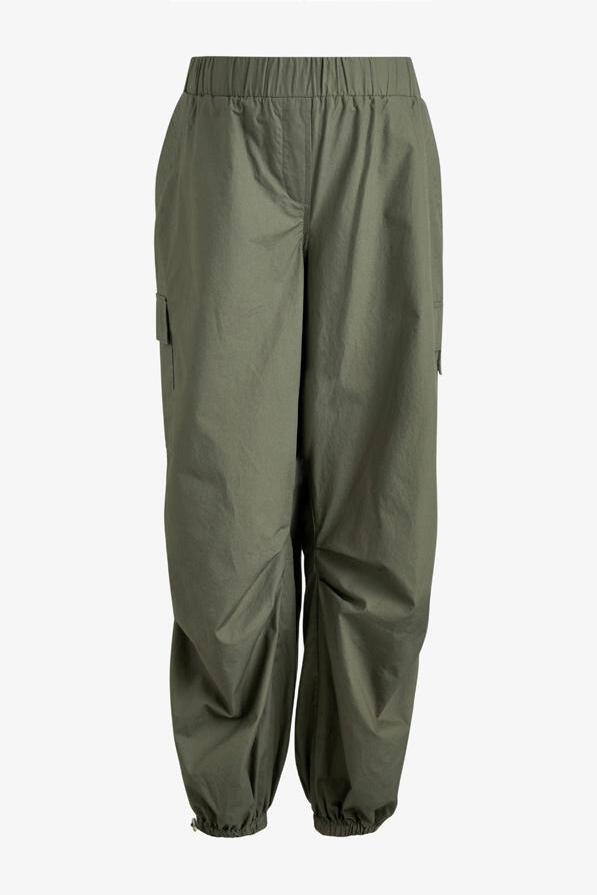
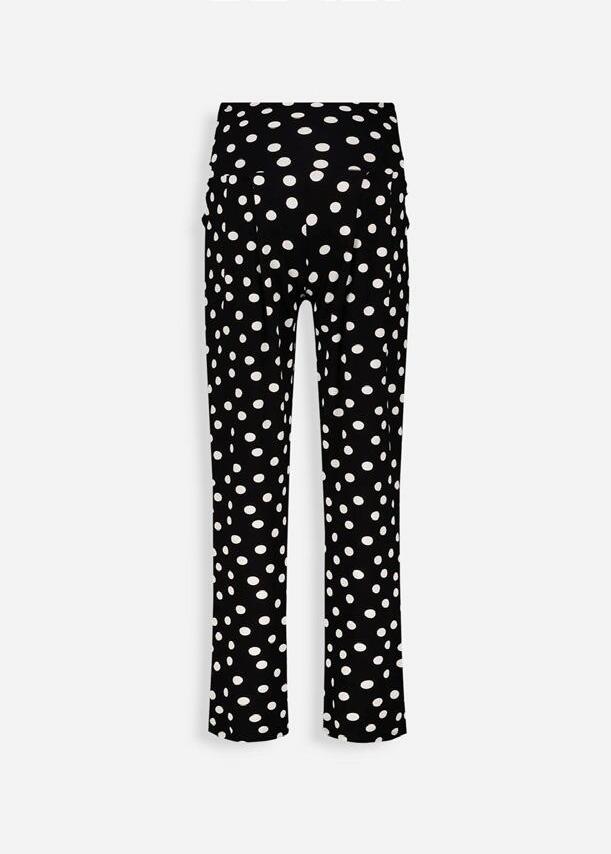
Stylish spring/ summer maternity clothing to keep you cool, calm and collected
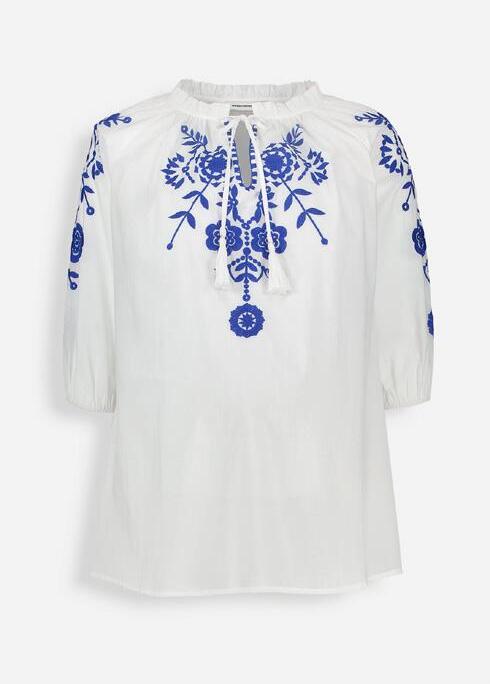





The sun's up earlier, the birds are tweeting, the weather's warmer... Spring is in the air! And soon it'll morph into the hazy-lazy summer season, with its sun, sea and socialising.
Here's our pick of the latest (and hottest, excuse the pun) maternity clothes for when the mercury rises and you want to take the fun outside.
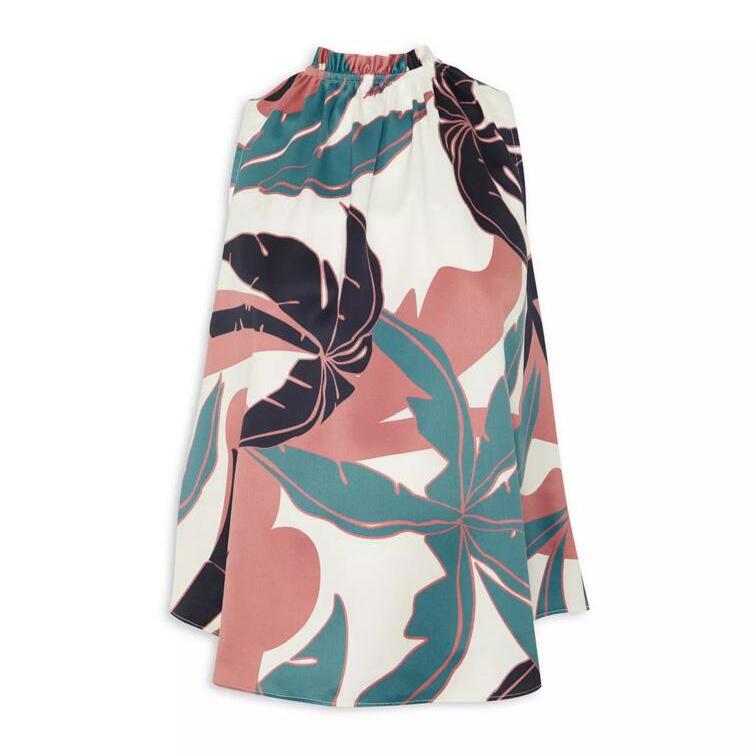

SHE WEARS THE PANTS
1. Maternity Utility Cargo Trousers in Khaki Green, Next Online (R423)
2. Cotton Maternity Pants in Black Polka Dot, Woolworths (R399)
3. Maternity Striped Cargo Jeans in Black, Mango Online (R1 199)
4. Ribbed Knot-Side Jumpsuit in Black, Next Online (R592)
Prices correct at time of print
1. Embroidery Tassel-Tie Neck Maternity Tunic in White, Woolworths (R699)
2. Maternity T-shirt With Necklace in Black, Truworths (R420)
3. Slogan Cotton Maternity T-shirts in Black or White, Woolworths (R299 each)
72 MOTHER & CHILD ISSUE 28
4. Sleeveless Maternity Shell Top in Floral, Truworths (R350)
1 1 2 2 3 3 4 4

2. Maternity/Nursing Button-Front Playsuit in Pink, Next Online (R494)

3. JoJo Maman Bébé Short Maternity Dungarees in Navy, Next Online (R765)
4. JoJo Maman Bébé Maternity Chino Shorts in White, Next Online (R569)


Fashion BEST BUYS




ALL DRESSED UP
1. Maternity Nursing Dress in Floral Print, Next Online (R508)
2. Smocked Balloon-Sleeve Maternity Midi Dress in Blue, Woolworths (R699)
3. Seraphine Midi Wrap Maternity Dress in Red, Next Online (R1 353)
4. Denim Tiered Maternity Dress in Indigo, Truworths (R750)
5. Seraphine Cotton Embroidered Maternity Sundress in White, Next Online ( R1 157)
6. Maternity Shirt Dress in Green, Truworths (R750)
7. Seraphine Pinstripe Linen and Cotton Midi Maternity and Nursing Dress in Blue, Next Online (R1 353)
8. Seraphine Maternity and Nursing Midi Dress in Sage Green, Next Online (R1 471)
STOCKISTS
MANGO ONLINE shop.mango.com/za
NEXT ONLINE
www.nextdirect.com/za
TRUWORTHS

www.truworths.co.za
WOOLWORTHS
www.woolworths.co.za



ISSUE 28 MOTHER & CHILD 73
Prices correct at time of print 1 1 2 2 3 3 4 4 6 5 7 8



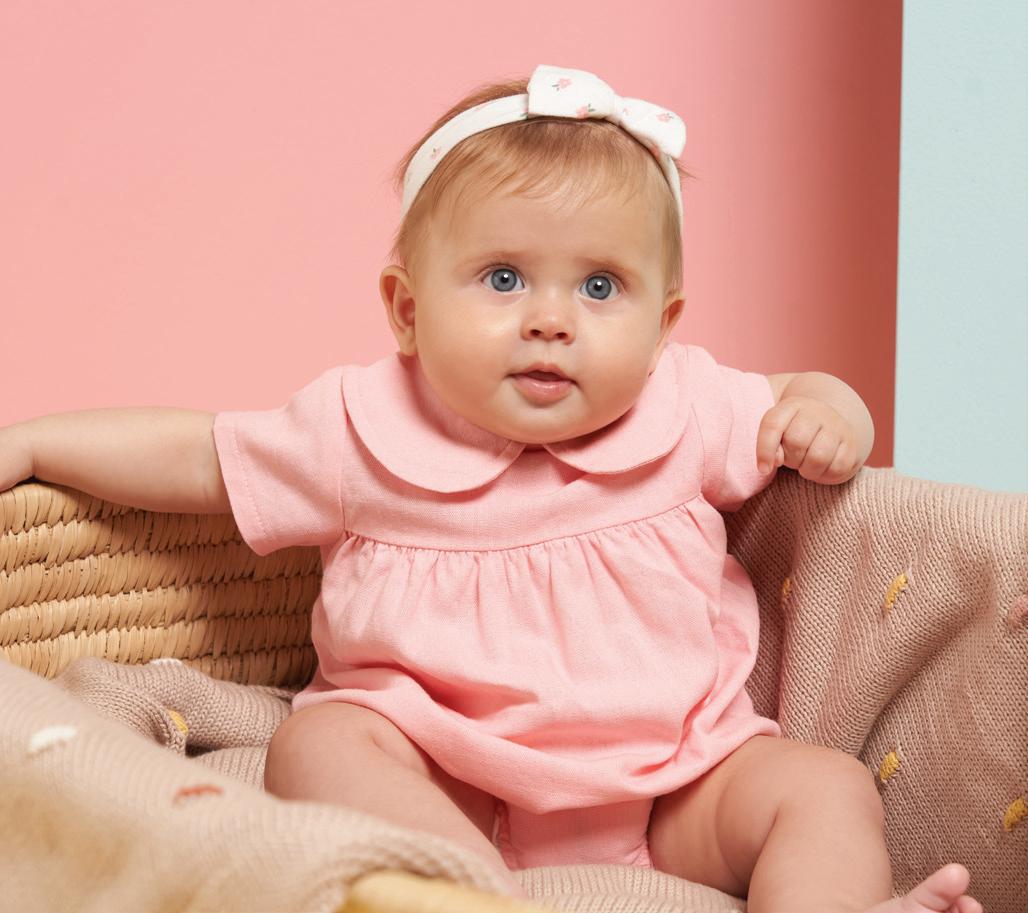



PRETTY HEALTHY
Skincare for moms during the postpartum period
Pregnancy brings about many changes within the body, and many of these involve your skin. Postpartum skin may show signs of pigmentation and darks spots, breakouts and acne or rashes and stretch marks.
“Your skin changes during pregnancy, and sometimes these changes can persist afterward. It can take a while for your skin to rebound after pregnancy, and not just your stretched out belly,” says Kevin Khosa, from SKIN functional ( skinfunctional.com).
Fortunately, blemishes and other skin changes that arise during the ninemonth prelude to the big event will mostly resolve during the postpartum period. But if you’re still having breakouts, dry skin or other skin problems after pregnancy, here’s what may be going on and what you can do to pamper your postpartum skin.
COMMON CHANGES THAT MAY ARISE:
• Hormonal swings that may cause breakouts and acne.
• Hormonal changes causing pigmentation and dark patches/rashes.
• Glandular changes.
• Structural changes in your skin.
• Pre-existing skin conditions that worsen (or improve) during pregnancy.
The best way to combat your skin changes and get it back on the straight and narrow—while also trying to look after an infant—is to establish an airtight morning and nighttime skincare routine:
• Wash your face twice daily. Use a

mild cleanser and warm water.
• Moisturise. Do it after your shower and before bed.
• Avoid long, hot soaks or excessively hot showers. You don’t want to strip your skin of its natural oils. Instead, take a 10- to 15-minute shower or bath (perhaps with added bath oil) in lukewarm water.
• Hydrate from within. Drinking plenty of fluids, and including healthy omega-3 fatty acids in your diet can help keep your skin supple.
• Resist the urge to pick or squeeze pimples, which could cause scarring.
• Use mild topical treatments that are suitable to your skin type and effectively address your concerns.
• Protect your skin from the sun. Apply a 30-or-greater SPF broad-spectrum sunscreen each day.
• Exercise a great deal of patience, as it can take up to a year for hormones to normalise post-pregnancy.
Pregnancy-related skin changes are common, and they often resolve on their own. You can experience melasma (the 'mask of pregnancy'), leaving darker hued splotches across your face. A rise in hormone levels plus exposure to the sun’s UVA and UVB rays cause hyperpigmentation. These patches usually fade over time, although sun exposure can make it worse.
Linea nigra, which is Latin for 'black line', is a darkening of the vertical band of fibrous connective tissue that runs from your navel to your pubic region. Again, this type of pigmentation is due to hormonal changes. The tell-tale line usually fades within months.
Moms-to-be know all about the red, brown or purple lines that streak their bellies during pregnancy. Butts, thighs, hips and breasts can get stretch marks, too. They are thought to be the result of both physical and hormonal changes. Stretchmarks probably won’t disappear entirely, but they can fade over time. Once baby has been born and mom is no longer breastfeeding, introducing retinoids to address the stretchmarks can have phenomenal results.
Ingredients that are safe to use during this time are mineral sunscreens, benzoyl peroxide, niacinamide, bakuchiol, azelaic acid and vitamin C. “You may also want to look for skincare products that have niacinamide, zinc and hyaluronic acid to assist your skin with hydration, breakouts and managing dark marks,” adds Khosa.
76 MOTHER & CHILD ISSUE 28
BEST BUYS Beauty
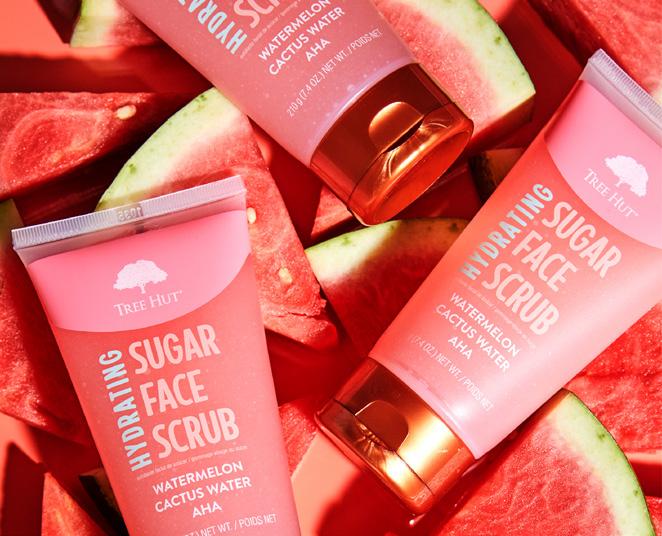
TREE HUT AHA SUGAR FACE SCRUBS (R395)
Buff and brighten to reveal your most glowing complexion with Tree Hut’s triple-action face scrubs, with their rejuvenating recipe of shea butter, real sugar and fruit enzymes. Sugar is a natural exfoliant that effectively polishes away dead skin while helping to boost circulation to the skin surface. The face-friendly formula also contains superfoods to nourish, hydrate, purify and brighten the skin. Turn your skincare routine into a luxurious self-care experience! Available in three variants: Brightening Pineapple & Papaya, Hydrating Watermelon & Cactus, and Purifying Blueberry Turmeric. medhealthsup.com

SOIL PURE TISSUE BLENDED OIL (R180)
Formulated by a qualified aromatherapist specifically for SOiL, this massage oil is a nourishing blend of rosehip seed oil, rich in essential fatty acids and vitamins, plus tangerine and lavender to reduce the appearance of stretchmarks and scarring. It will help keep your skin soft and supple. Online at soil.co.za, and Dis-Chem and Wellness Warehouse stores
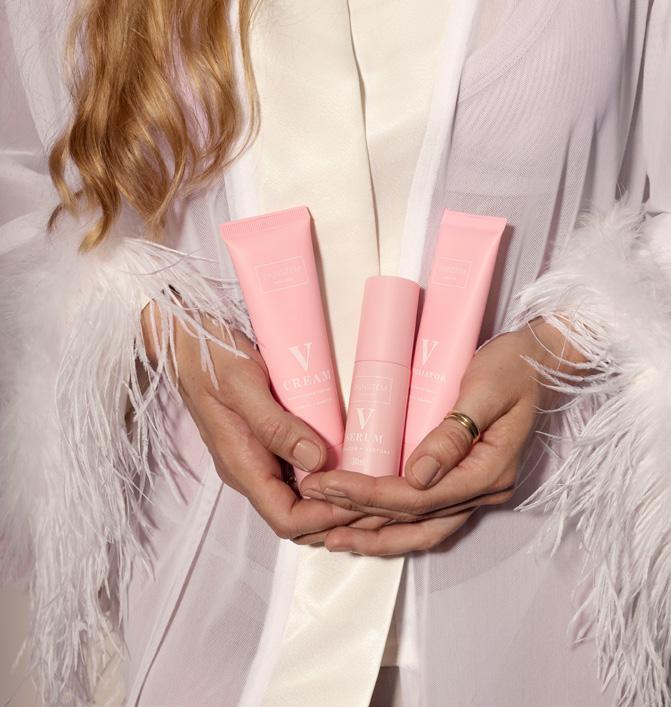
SKINSTEM RANGE
This proudly South African intimate skincare brand has been specifically created for the bikini area. The products are made to target skin issues such as pigmentation, hydration, unwanted ingrown hairs, and improve overall appearance of the V-area—ensuring women have a positive relationship with their most sensitive area. The lightweight V-Cream (R285) is a mild moisturiser with anti-pigmentation and brightening properties. V-Exfoliator (R285) gently helps promote skin resurfacing to leave the skin feeling renewed. V-Serum (R350) helps reduce dehydration, restore firmness and soothe the skin after shaving, plucking or waxing. www.skinstem.co.za

ECO DIVA GOOD GUT GLOW (R395)
Good Gut Glow is a blend of nutrientrich superfoods including acai, maca, chia, baobab, hemp and plant-based protein. It's like a party in your mouth and a celebration for your gut! Plus, it's packed with prebiotics: the secret sauce that keeps your gut microbiome healthy and your skin happy. Free from artificial flavours, sweeteners and preservatives, this mouth-watering and nourishing shake will give your skin that radiant glow from the inside out. ecodiva.co.za

MAVALA PREBIOTIC HAND CREAM (R340)
This hand cream provides the necessary nutrients to maintain the balance and microbiological activity of the skin, thanks to its natural prebiotics—a combination of yoghurt and inulin—that preserve the balanced diversity of the microbiota. This expert care soothes tightness, reduces redness and brings immediate comfort to the most delicate and sensitive hands, leaving them supple, soft, perfectly hydrated and protected.
mavala.co.za and selected Dis-Chem and Clicks stores

MOM BOD SKIN STRETCH SERUM (R255)
This serum is a luxurious botanical blend of deeply nourishing plant oils to boost hydration, strengthen the skin’s natural protective barrier and improve the elasticity—keeping it nourished, supple and balanced to help protect against stretchmarks. The unique formula absorbs quickly into the skin without a greasy feeling.
ISSUE 28 MOTHER & CHILD 77
Our favourite things
A pick of the latest quality must-haves for your little one


1 2 3
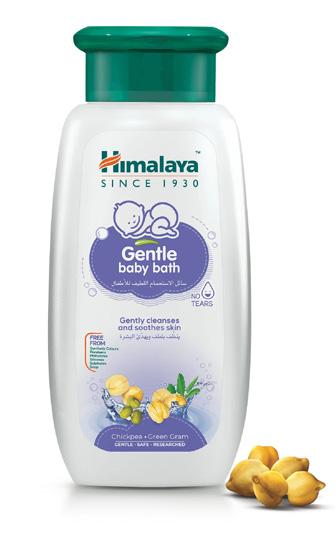


1. MR PRICE HOME INTERACTIVE MUSIC BUS (R199.99)
Delight the senses of curious little minds with this cute little interactive toy bus. It includes a xylophone, shape sorter and beads. It’s a great way to improve your little one’s hand-eye coordination. From 18 months of age. www.mrphome.com
2. HIMALAYA GENTLE BABY BATH (R41.99) & GENTLE BABY SOAP (R18.99)
Himlaya’s no-tears baby bath formula is made with 100% herbal actives that support baby’s skin’s natural health. It’s ultra-gentle with the goodness of chickpea, fenugreek and green gram that cleanses baby’s skin without stripping it of natural oils. The baby soap—with almond and olive oil—is mild and soothing, replenishing lost moisture while gently cleansing baby’s skin.
and can also help relax colicky infants. Research has shown that baby massage promotes growth and development in premature babies and has many benefits for little ones and their parents in general. Enjoy a bonding experience with your baby using this relaxing and soothing massage oil, formulated by a qualified aromatherapist specifically for SOiL. The product contains no petrochemical ingredients or mineral oil.
Online at soil.co.za, and Dis-Chem and Wellness Warehouse stores
5. FLATDOG BODYGUARD™ BABY SUNSCREEN (R320)


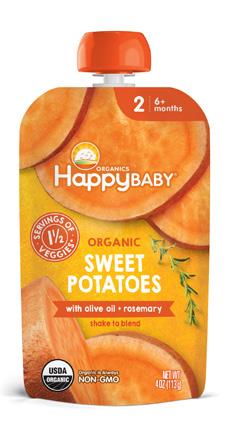

Clicks and Dis-Chem stores, and online at himalayawellness.co.za and takealot.com
3. ECO BOOM BAMBOO WIPES JOY (R229)

This new version of ECO BOOM’s ecofriendly baby wipes gives a 14% larger wipe than the previous generation. As before, they are gently made from bamboo fibre to clean your baby’s sensitive body, including hands and face. They are free from inks, odours and fragrances—promoting healthier skin and reducing the risk of rashes. eco-boom.co.za and takealot.com
4. SOIL BABY BLENDED OIL (R120)
The Flatdog Bodyguard SPF 50 sunscreen product range was developed in South Africa to meet the needs of all environmentally aware ‘sun lovers’—even babies and kiddies. It’s a natural SPF 50 biodegradable, zinc and mineral-based sunscreen lotion. The baby variant—for children from 3 months old—applies and spreads easily, is quick-drying and absorbed fully and transparently by the skin’s surface. Not only is it safe for your little one, but it’s also safe for marine life and coral reefs. Online at flatdog.co.za, www.faithfulto-nature.co.za and takealot.com, and Wellness Warehouse stores
6. HAPPY BABY SAVOURY BLEND POUCHES (R49)

This gentle blend of chamomile, lavender and olive oil will help keep your baby’s skin moisturised
Introduce your baby to delicious solid foods by the spoonful. These unsalted organic baby food pouches deliver 1½ servings of veggies in delicious recipes made with flavourful fats, spices and herbs. Rest assured they contain no genetically modified ingredients, highfructose corn syrup, artificial food colourants or flavourants. Available in three variants: Broccoli & Carrots with Olive Oil + Garlic; Squash, Chickpeas & Spinach with Avocado Oil + Sage; and Sweet Potatoes with Olive Oil & Rosemary.
Baby City, Babies R Us, takealot.com and medhealthsup.com
78 MOTHER
BEST BUYS for Babies
Growing up fast!
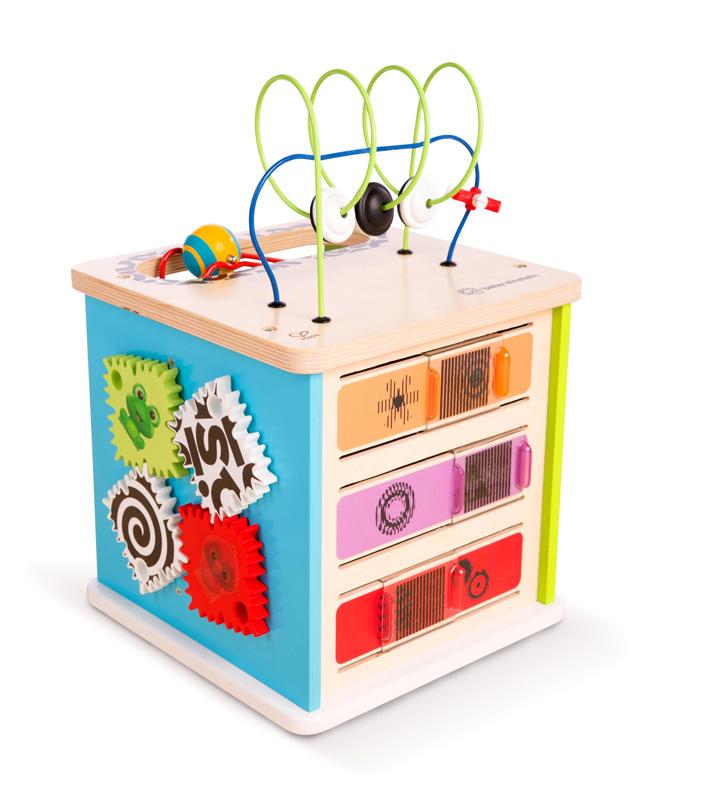
Here are a few nifty products for mommy’s big girl and big boy 2
1. BABY EINSTEIN INNOVATION STATION ACTIVITY CUBE (R1 909)


Five sides of fun await your little scientist! Watch as your tot becomes enthralled with the different things they can grab, spin, twirl and activate. They'll be curious and eager to find out what happens when they push and pull the animation sliders or turn the boldpatterned gears. Gadgets like floating beads and curious square gears will keep them coming back to play with this developmental toy. takealot.com
2. LITTLE WEASEL BEECH BABY HAIRBRUSH AND COMB SET (R395)
Your little one’s precious scalp and brand-new hair deserve the gentlest care. These tot-sized, all-natural beechwood utensils are just the tools for their budding nursery spa routine— covering their care, styling and detangling needs. The set includes the Little Weasel Goat’s Wool (ultra-soft!) Hairbrush, Bamboo Bristle Massager/ Detangler, and Styling Comb. littleweasel.co.za


3. HAPPY TOT LOVE MY VEGGIES (R52)
It can be difficult to introduce vegetables during your toddler’s picky eating stage. Each Happy Tot pouch blends just the right amount of organic fruit with a full serving of veggies for a snack your little one will savour. And tiny hands will love the easy-squeezy pouches. Baby City, Babies R Us, takealot.com and medhealthsup.com
4. EICHHORN BABYPURE SENSOR SOUND BLOCKS (R305)
This sustainable wooden toy, made from 100% FSC–certified beechwood, has various sound functions. The six stackable sensor sound modules have different colours and shapes, and are equipped with balls, a bell and other items. This promotes acoustics, motor skills and hand-eye co-ordination in children from 1 year of age. Babies R Us and takealot.com

5. VITAL BABY® NOURISH BIG KID CUTLERY (R121.99)
Children grow up so fast! Soon enough they’ll want to mimic mom and dad at the dining table or when at a sports event or picnic outing. Toddlers can now enjoy their own version of ‘adult cutlery’. The rounded fork tips are safe for feeding, and the chunky handles are easy for little hands to grip.
vitalbabyshop.co.za
6. THE ECO GANG CHILDREN’S BAMBOO TOOTHBRUSH (R59.99)
The Eco Gang is making ecofriendly personal care and household products accessible to everyone. Its vegan-friendly, cruelty-free bamboo toothbrush for kids from age 3 is made from 100% biodegradable bamboo that’s sustainably harvested and kind to the planet. Ideal for sensitive teeth and gums, the nylon bristles provide a thorough yet gentle clean.
Wellness Warehouse stores and online at www.faithful-to-nature.co.za and takealot.com
ISSUE 28 MOTHER & CHILD 79 for Toddlers BEST BUYS
3 6 1 4 5
BEST
for
Easy does it
Novel products to give mummies a helping hand
1. WE MIGHT BE TINY® FREEZE & BAKE MINI PODDIES (R399)
These moulds are the quick and easy answer to all your snack and mealtime dilemmas. The non-toxic silicone trays feature 25 snack-size character pods that can conjure up anything from mini muffins and cakes, to fruit gummies and froyo gems. If there are ever leftovers, there's a nifty matching see-through lid to keep your creations fresh. www.faithful-to-nature.co.za and takealot.com
2. TOMMEE TIPPEE LETSGO PORTABLE BOTTLE WARMER (R1 137)
With this portable baby bottle warmer, you can warm breast milk or formula milk to the perfect temperature in just 10 minutes, without the need for boiling water! Powered by a USB Type-C cable, it features three different temperature settings—37°, 40°C and 45°—so you can select the warming temperature according to your baby’s preference. The slow heating technology eliminates hot spots and ensures the milk is warmed evenly while preserving the essential nutrients and goodness in every feed. What’s more, the lightweight unit fits neatly in your handbag or changing bag so you can take it with you for easy feeding when out and about.
3. MOM BOD NIPPLE BALM (R185)
This product helps to soothe, nurture and protect cracked, irritated nipples throughout pregnancy and breastfeeding. The lanolin-free formula is a blend of nourishing plant oils and moisture-boosting butter to keep the nipple area supple while creating a natural barrier against chapping and chafing. It glides on easily, does not drag on sore nipples, and absorbs quickly into the skin without a greasy feeling. A great multitasker that can also be used on lips and cuticles. mombod.co.za

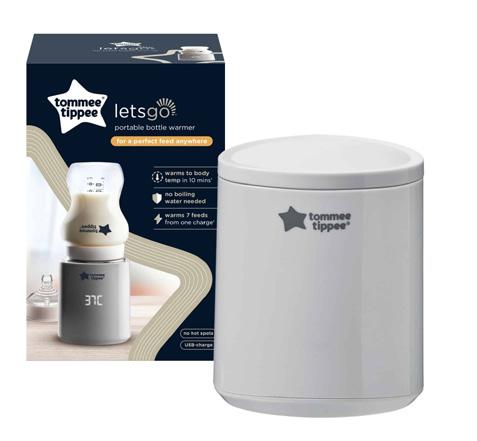


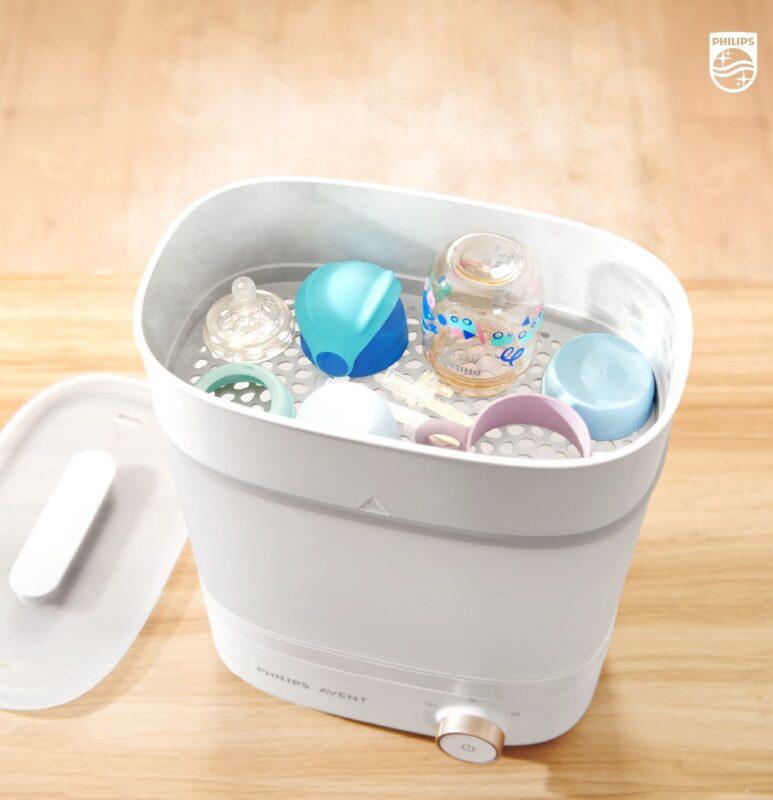
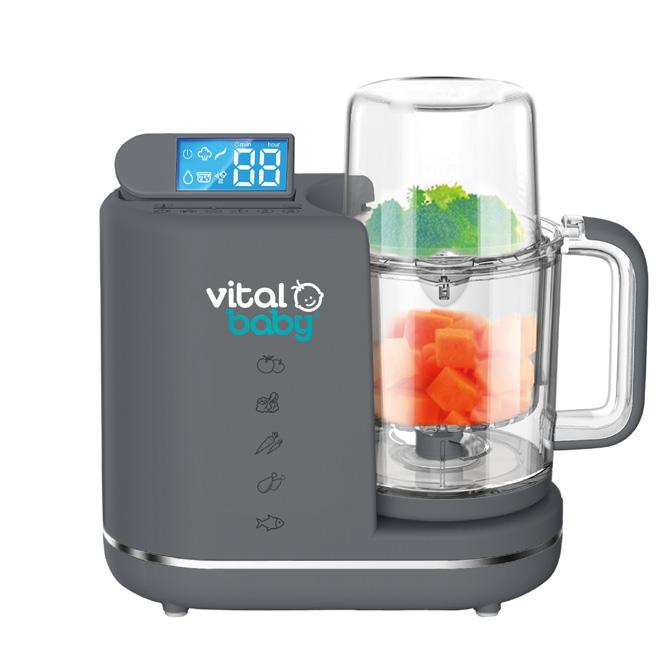
4. PHILIPS ONE SONICARE TOOTHBRUSH (R299)
Oral hygiene is super important, but particularly so during pregnancy. Upgrade your manual toothbrush with the sleek, lightweight and powerful Philips ONE. Each of the hundreds of soft bristles is transformed into microvibrating mini scrubbers by a tiny motor inside the handle. At the touch of a button, your teeth are gently cleaned and whitened. The dynamic pattern of the bristles can help reach into the areas between your teeth for thorough cleaning. Choose between funky Coral and ultra-cool Midnight Blue.
www.sonicare.co.za
5. PHILIPS AVENT DIGITAL STEAM STERILIZER (R1 500)
The ultra-fast three-tier Philips Avent Digital Steam Sterilizer is big enough for bottles, teats and soothers to be stacked and steamed. It tells you when sterilisation is complete and how long items will remain sterile. It also lets you know when you’ve filled the steriliser with too little or too much water. The two baskets inside clip together to form a dishwasher basket, which makes precleaning of smaller items like soothers and nipples much easier.
www.takealot.com
6. VITAL BABY® NOURISH PREP & WEAN™ STEAM COOKER (R3 799)
Steam-cooking vegetable and fruits and blending homemade meals is now quick and easy. With three modes—sterilise, steam-cook and blend—this appliance is perfect for batch cooking and feeding later. You can tailor the consistency of food to your child’s stage of weaning: from smooth purées to chunkier textures. And the two-tier steaming system allows you to cook multiple foods with different cooking times all at once—making it suitable for use with fruit, vegetables, meat and fish.
vitalbabyshop.co.za
80 MOTHER & CHILD ISSUE 28
BUYS
Moms
1 2 3 6 4 5








Sterimar Baby
• Isotonic Sea Water Nasal Spray
• Preservative-free with marine trace elements
• For babies from 0-3 years
• Clears mucus from a baby's nose to assist with breathing and bottle feeding
• Cleanses the nasal passages


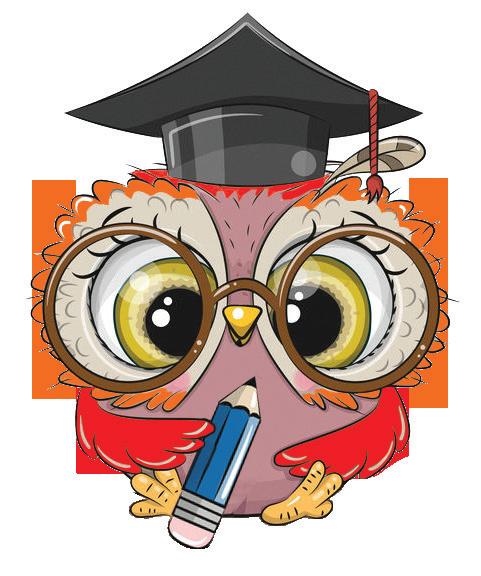



Sea Water
Nasal Sprays

New Nozzle for our baby range
Specially designed non-slip safety nozzle diffuses a micro-fine spray, making it more gentle on baby's tiny, delicate nostrils
South Africa’s number one selling sea water nasal spray1

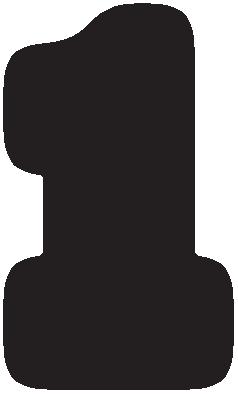
Sterimar Blocked Nose
• Hypertonic Sea Water Nasal Spray
• Preservative-free with added copper
• For babies and children from 3 months of age
• Aids natural breathing
• Cleanses the nasal passages and makes breathing, bottle or breastfeeding easier

Actor Pharma (Pty) Ltd, Reg No 2008/008787/07 Unit 7 Royal Palm Business Estate 646 Washington Street Halfway House Midrand 1685 Tel: 011 312 3812, Fax: 011 312 7814 www.actorpharma.co.za STE/AD/02 09/2023
Reference 1: Based on internal analysis by Actor Pharma (Pty) Ltd using data from the following source: IQVIA TPM MAT Jun 2023 ATC4 R01A9- Sea Water Brands - measured in Units, reflecting estimates of real-world activity. Copyright IQVIA. All rights reserved.
Digitally signed by Danel Swart Date: 2023.09.19 15:16:35 +02'00'
Danel Swart
BOOKS We love
A pop-up, a new Ten Minutes to Bed adventure, fun board books and funky recipe collections are all among this quarter’s favourite reads for youngsters
WHAT DO MONSTERS AND MERMAIDS MUNCH?
by
Lori-Ann Preston
Have you ever wondered what monsters and mermaids eat for breakfast? Do you know what a Bloobidah’s favourite lunch is? And do you know how to make frikkadels for dragons? Find out in this fun, colourful and mouthwatering recipe book!
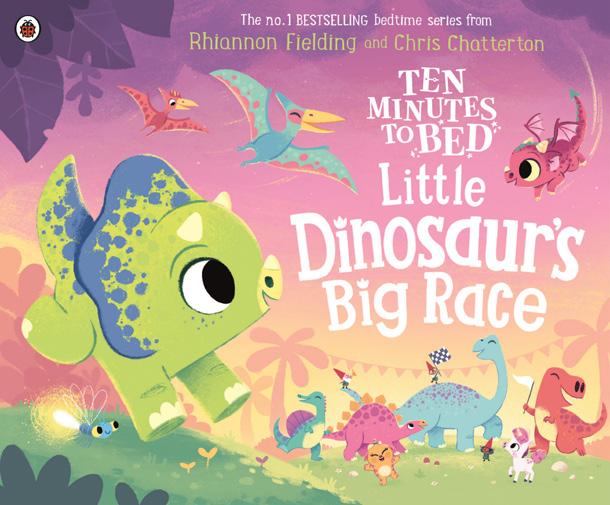
TEN MINUTES TO BED: LITTLE DINOSAUR’S BIG RACE
by Rhiannon Fielding
Deep in the jungle, Rumble and his dinosaur friends are getting ready for a big competition. Split into teams, they venture across the Land of Nod, taking on the tallest mountains and the splashiest of rivers. Will Rumble and his team be able to win the race this year and still make it to bed on time?

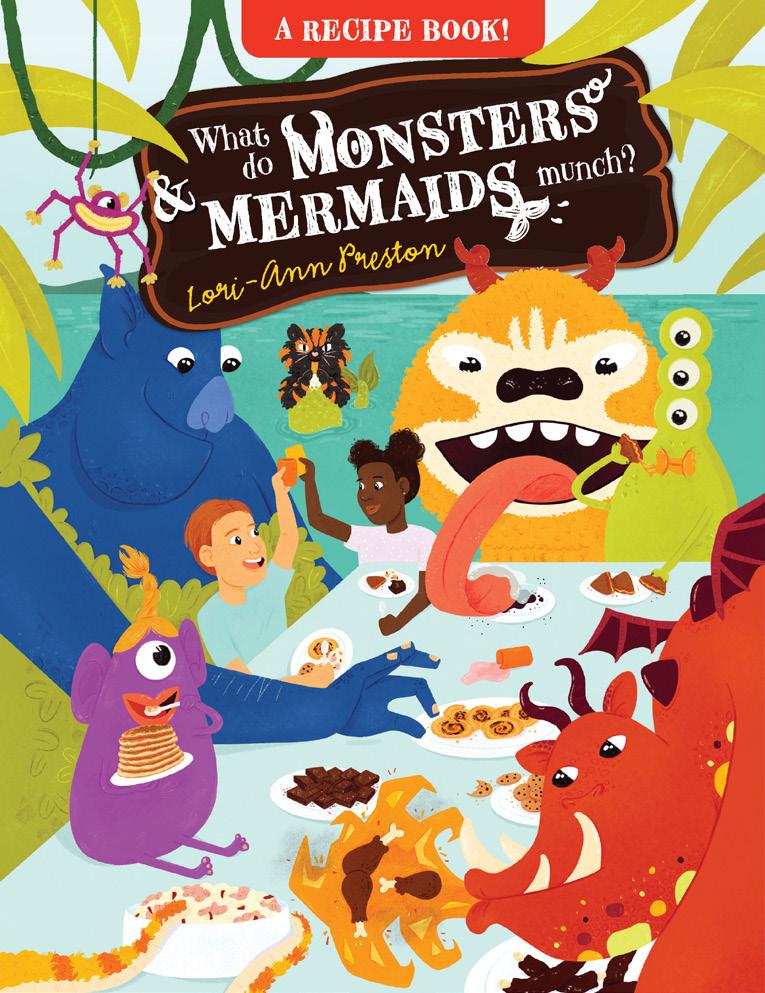

POP-UP PEEKABOO!
FOREST
by DK
Look up in the trees, down to the forest floor, and behind the flowers and ferns, and discover the animals that are hiding in the forest. Babies and toddlers will love lifting the big flaps to find five peekaboo surprises popping up from the pages.
THE VERY HUNGRY CATERPILLAR EATS LUNCH
by
Eric Carle
Join The Very Hungry Caterpillar as he eats his way through many different lunch foods and learns all about colours. This bright and bold board book with die-cut holes is perfect for fans of The Very Hungry Caterpillar series, and it’s ideal for all toddlers discovering the joy of food.
82 MOTHER & CHILD ISSUE 28 LEISURE Reading


ISSUE 28 MOTHER & CHILD 83 KEEP THEM SMILING Visit www.stjosephshome.org.za/donate Sign-up for our quarterly mailer, scan the QR code to the left. Here’s how you can help: DONATE scan to donate with Follow us on social media! • @stjosephshome • @stjosephshomeofficial • @st_josephshome For over 85 years, St Joseph’s Home has given thousands of medically fragile children a second chance at childhood. We provide much-needed post-acute, chronic, palliative and respite care to children with life-threatening illnesses. Want to know how you can support? Visit our website and follow us on social media!
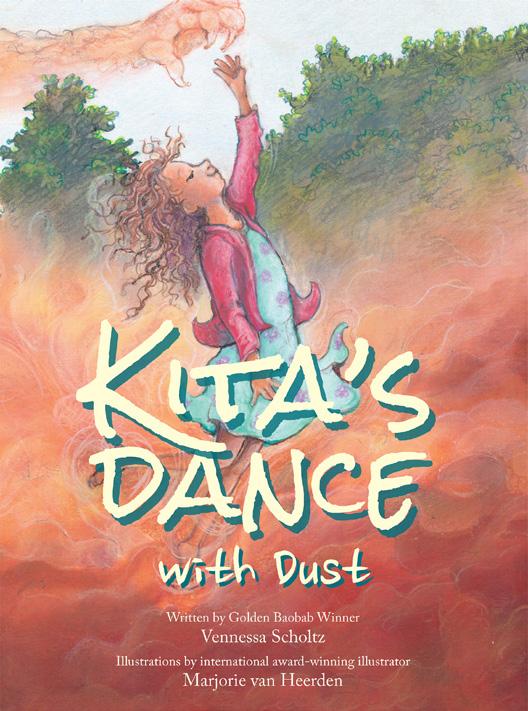
DISNEY’S BIBBIDI BOBBIDI ACADEMY
KITA’S DANCE WITH DUST
All books published by Penguin Random House
by Vennessa Scholtz Kita loves walking on the dusty red road. Mama tells her not to make red dust clouds—because if the red dust cloud grows, it will become a Dust Eater. Dust Eaters swallow little girls in one big bite. Kita doesn’t think that story is true, but one afternoon she learns what Mama is talking about.
MIND THE MONKEYS
SERIES by Kallie George Learn the secrets to becoming a Disney fairy godmother! In the first book, Rory Spellington is fluttering with excitement as she begins her first year at the prestigious Bibbidi Bobbidi Academy. But fairy godmothering may not be as easy as she thought, especially because she’s always struggled with spelling―magic spelling, that is. During her first week at the academy, Rory discovers there’s more to being a good fairy godmother than magic, and she’ll learn she has her own set of talents that set her apart.

by Dianne Stewart Karl and his family are on their way to visit his grandmother in Durban for the school holiday. He loves visiting her, but she always makes him get up early to go on nature walks. At first Karl doesn’t like these walks, but slowly he starts to develop a love for the trees and the monkeys that inhabit the forest.


MY FIRST JAN BRAAI BOOK
My First Jan Braai Book is the best introduction to braai for little ones, and the first book of its kind. It includes English, Afrikaans, isiXhosa and isiZulu translations of basic braai terms, as well as picture-based steps to making South Africans’ favourite braai dishes like chakalaka and roasted marshmallows.
WELCOME TO UNICORN SCHOOL
by Rose Cobden
Rocky is very excited. It’s his first day of school and he can’t wait! He races to the school gates with all the other little unicorns and walks proudly through the corridors to his new classroom. But when something goes wrong, the little unicorn starts to worry that he may not be allowed to stay…


84 MOTHER & CHILD ISSUE 28
LEISURE Reading
KuraFlo ® – Your Winter Solution
In the middle of winter, we all find ourselves either trying to avoid flu, or we are busy fighting flu.
During colder temperatures in winter, the flu virus multiplies a lot faster and flourishes in your body once breathed in. Since the air is also drier when it is cold, germs hang in the air for much longer.
Make KuraFlo Hypertonic Saline solutions part of your cold and flu prevention this year.
Kuraflo Hypertonic saline draws fluid from the lining of the nose, sinuses, larynx and bronchi to help wash out those trapped bacteria and virus particles. The salt can also help dehydrate the bacteria and virus cells and kill them before they cause a respiratory infection.
If you are fighting the flu virus, Kuraflo Hypertonic saline will help bring down the swelling in the nasal cavities and thin the mucus and phlegm so that it can be coughed or blown out easier, giving you some much needed relief.
Also try our NEW anti-inflammatory, antibacterial & antiseptic KuraFlo Skin Healing Cream now available from selected Clicks stores. Try it and see the difference.
• Skin infections
• Skin Irritations
• Insect bites
• Scar treatment
• Cuts & Abrasions
• Nappy rash
KuraFlo – Helping you Breathe Better and now Feel Better too!
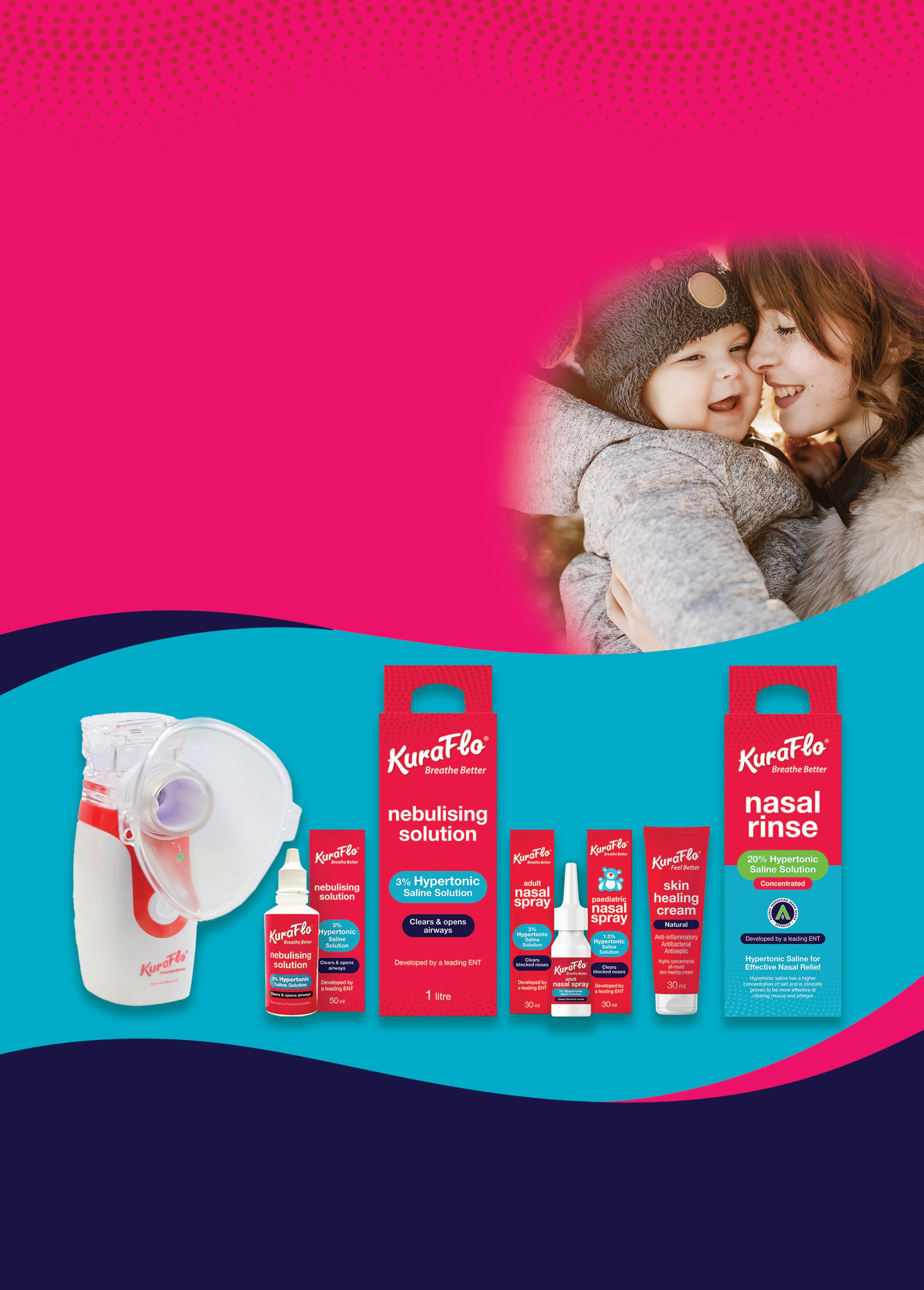

Pharmacies www.kuraflo.co.za Follow us on KuraFlo – a division of Medehealth
Independent









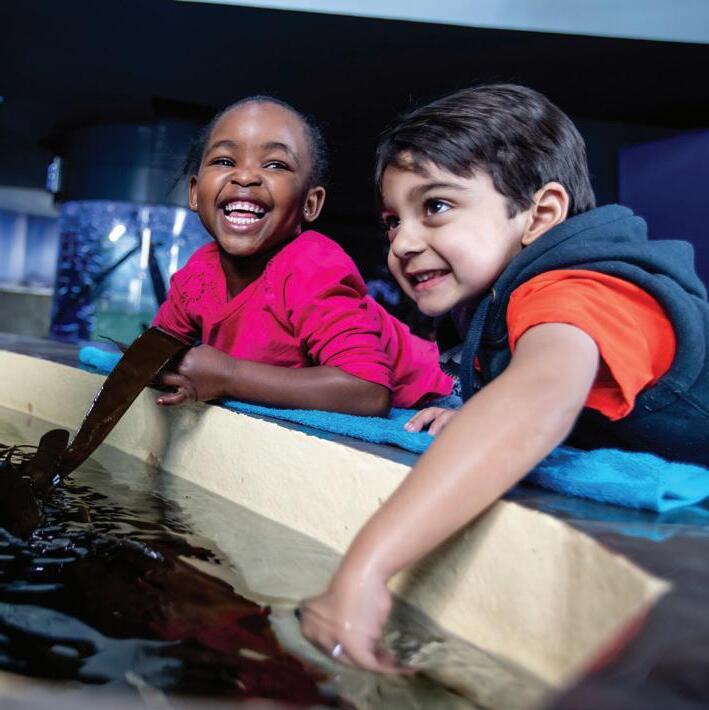

Schools of colourful fish, too-cute penguin antics, majestic ragged-tooth sharks, glowing jellies, gentle rays and the ever-elusive octopus – these are the reasons you’ll keep coming back to the Two Oceans Aquarium, where every visit is an underwater exploration. Unlock unlimited visits for yourself and your family with Two Oceans Aquarium annual memberships and visit the fish as often as you wish!
Explore the Aquarium your own way! Scuba dive in our exhibits, meet a rockhopper penguin up close, take a guided tour, and watch our animals being fed in the presence of our expert presenters. Come and discover our underwater world.
Your Aquarium visit starts here: www.aquarium.co.za











































































































































































































































































































































































































































